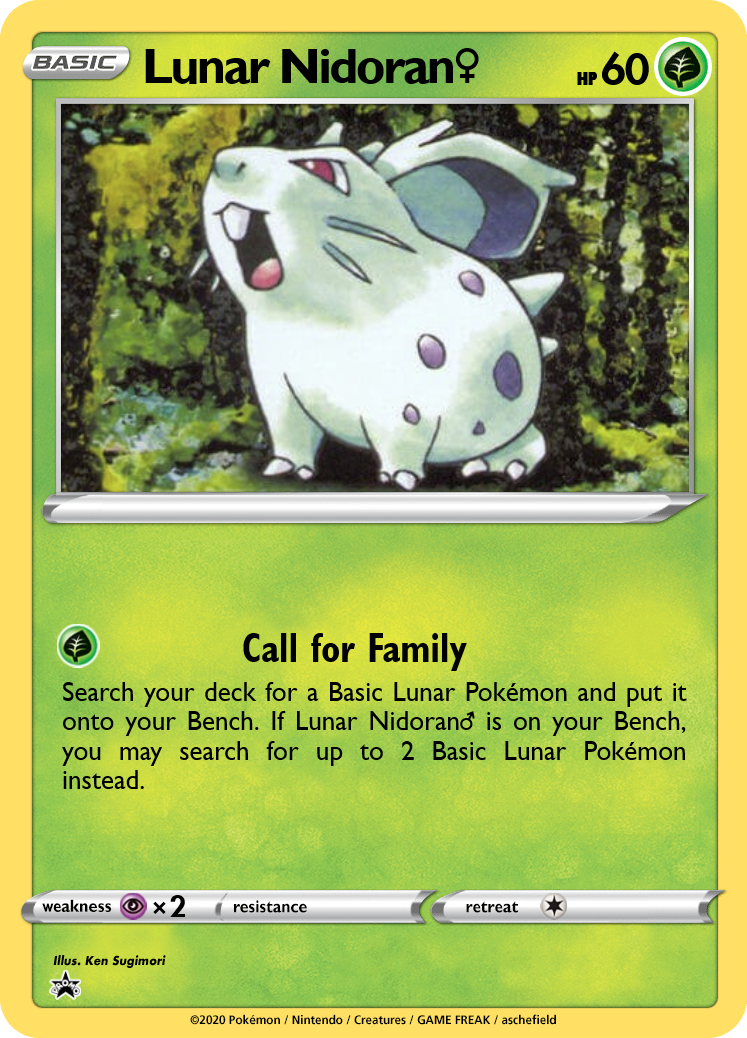
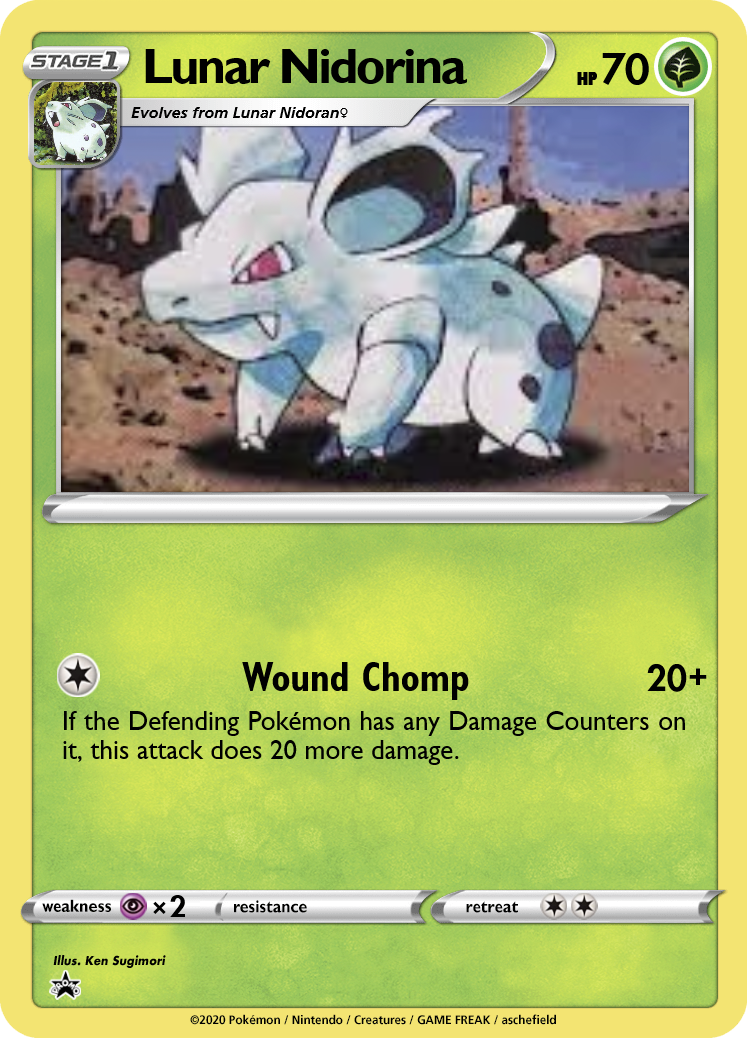
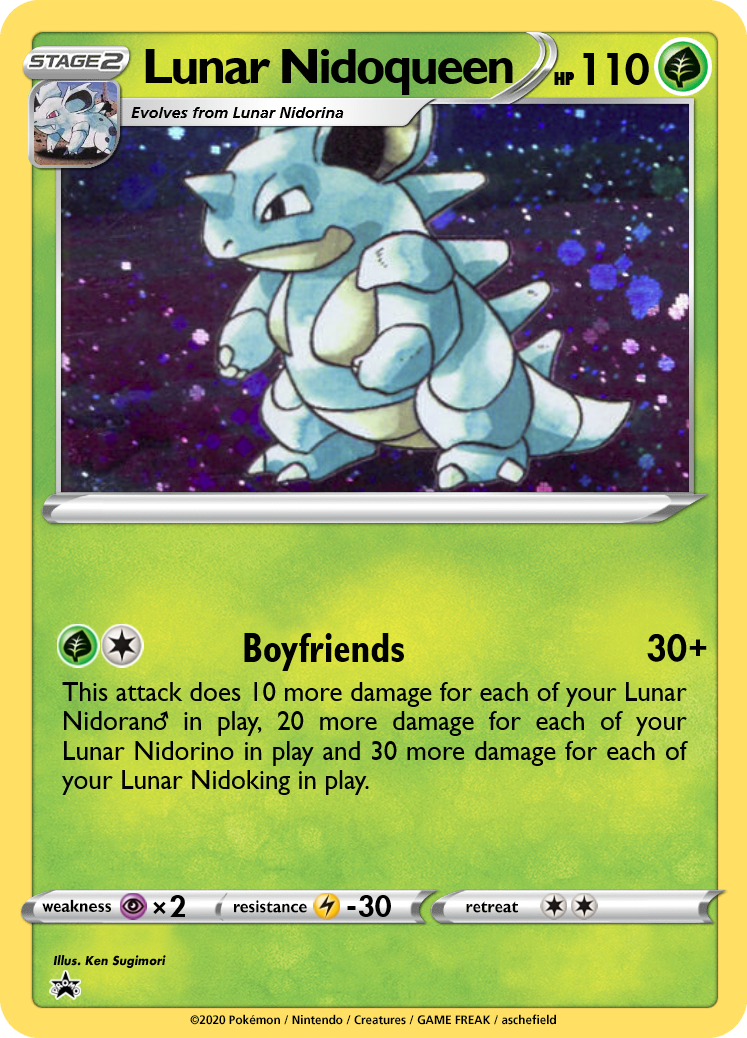
* Lunar Pokémon make their debut. This is a grouping similar to "Light" or "Dark" Pokémon, with members comprised of Pokémon related to the Moon Stone or outer space.
* Stadium cards are introduced, offering effects that support a variety of decks with dual-sided effects.
* We finally get Gust of Wind (as a supporter), dramatically changing gameplay with a consistent way to switch out the opponent's Pokémon
* Tough-to-beat Basic Pokémon including Mr. Mime, Lickitung, and Mewtwo debut. Alongside Clefairy Doll and Super Energy Removal, decks aiming to run their opponent out of resources gain more juice.



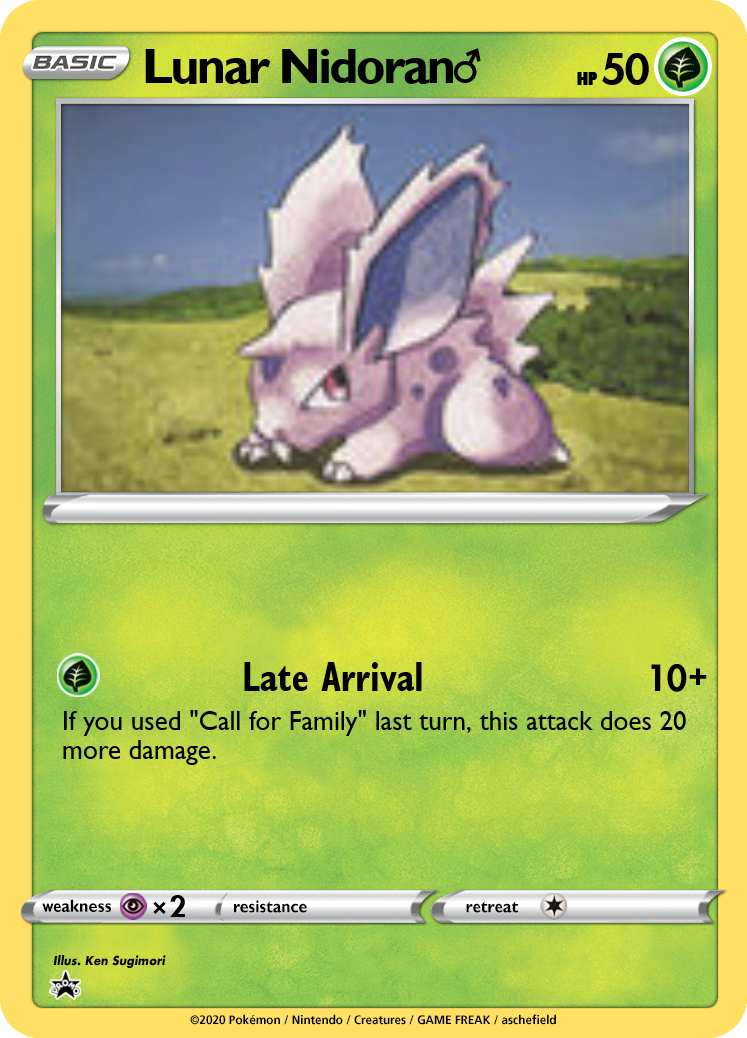
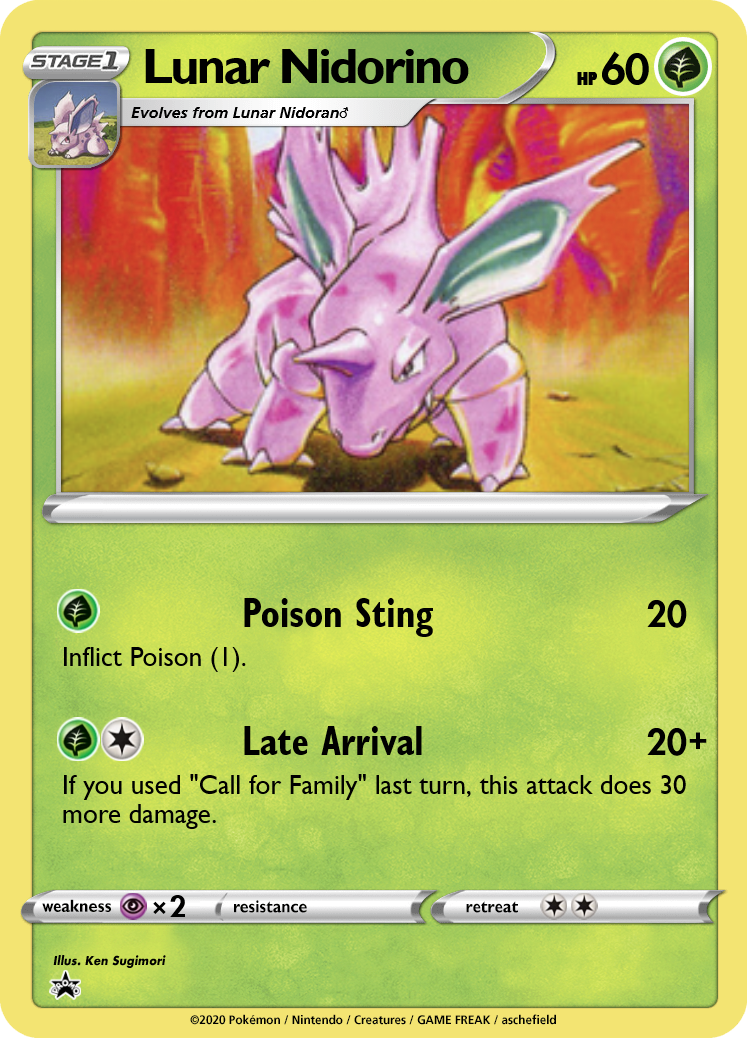
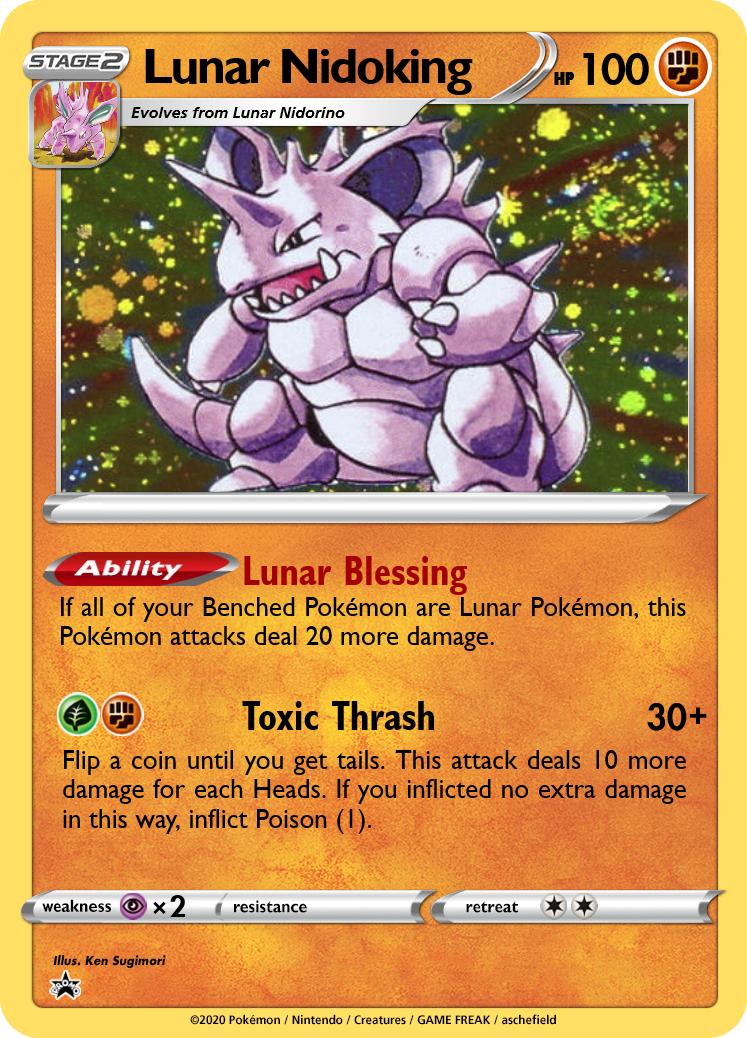
In the original format, I think the designers had a good idea in "Boyfriends". The deck ultimately suffered because setting up a field of Stage 2s is basically impossible. To remedy this, Nidoqueen now gains a benefit for NidoranM and Nidorino and has a much higher damage cap--170 damage with 4 Nidoking and a Nidorino is enough to OHKO just about anything in the format for just 2 energy. NidoranF accelerates the strategy by being able to call 2 Pokémon, rather than just one.
When Nidoqueen goes down, Nidoking is a reasonable backup attacker. The energy cost is awkward, but still fulfill-able by a single Double Rainbow Energy. With Lunar Blessing, that's 50 damage on one attachment, with the potential for more with some lucky flips.
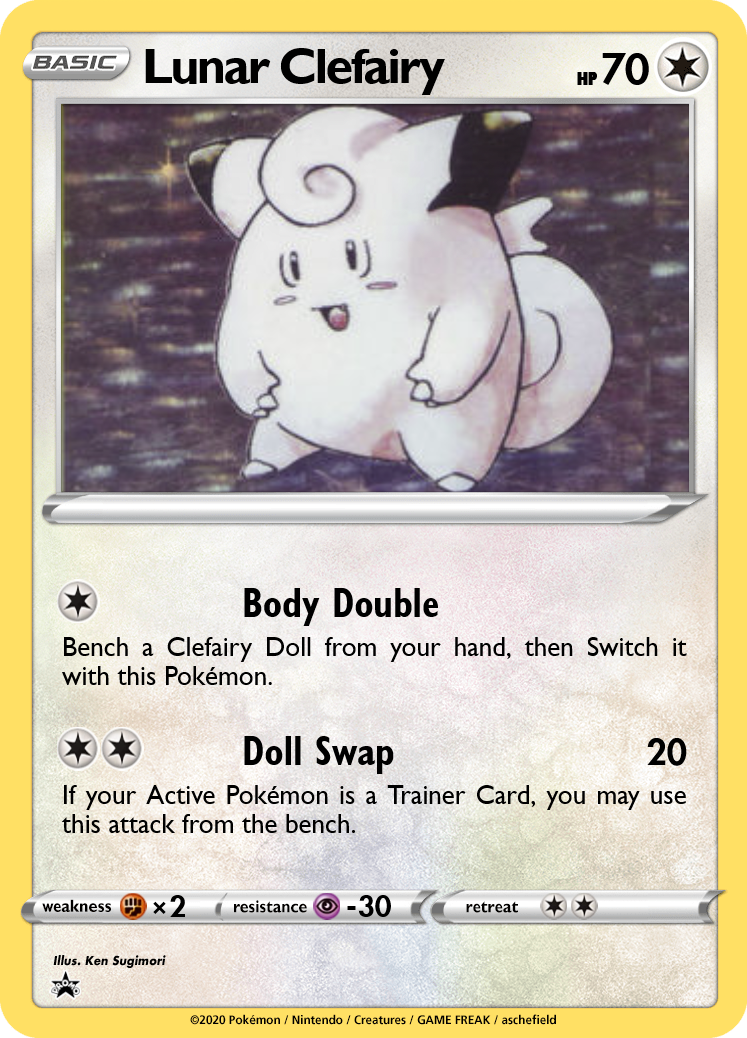
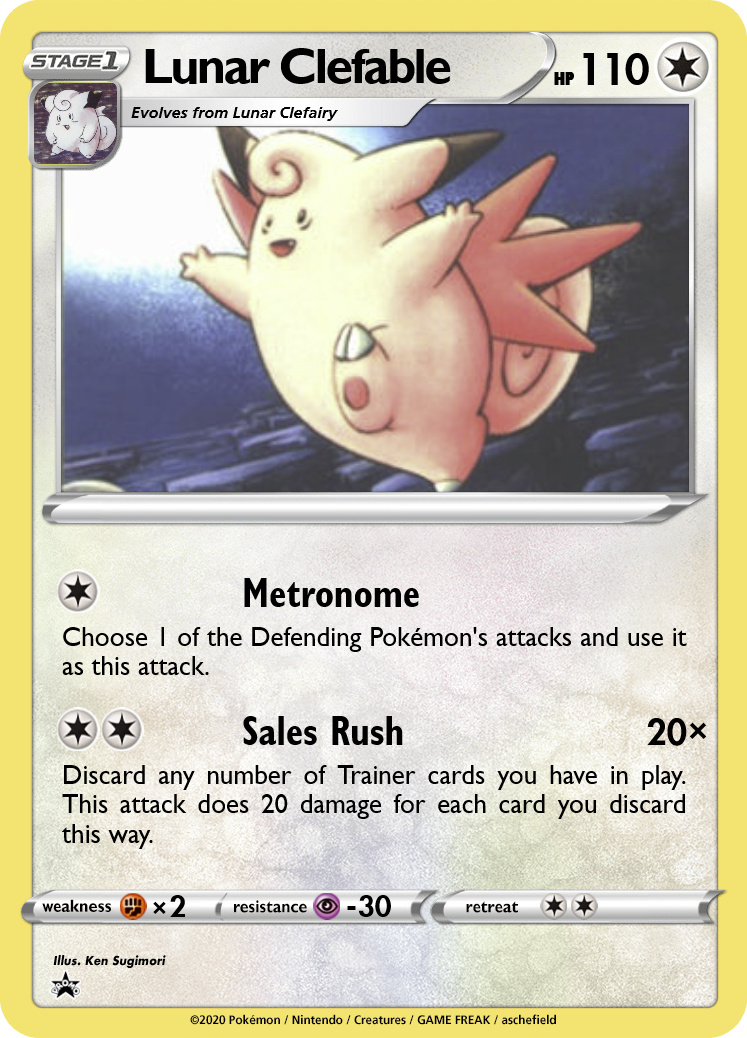
Clefable was already a usable Pokémon in the original format, so it keeps the iconic Metronome attack. The rest of the card design for this line focuses on interaction with Clefairy Doll. Note that Clefable can also discard your Pokémon Tools and even a Stadium if you're trying to pick up a Knock Out.
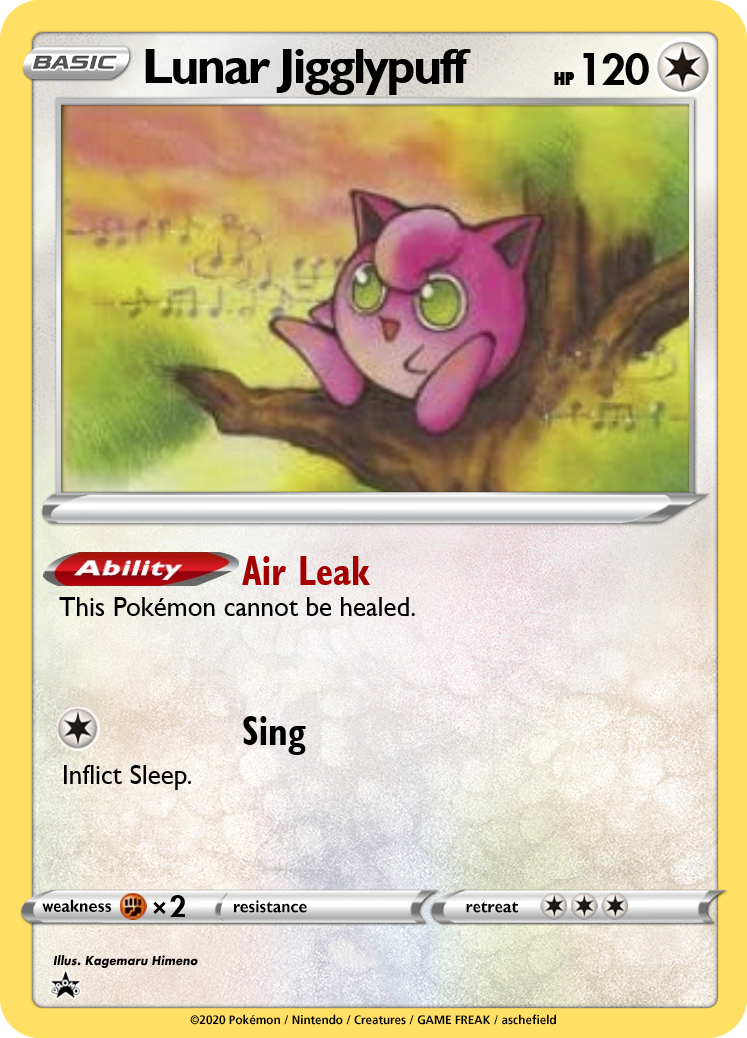
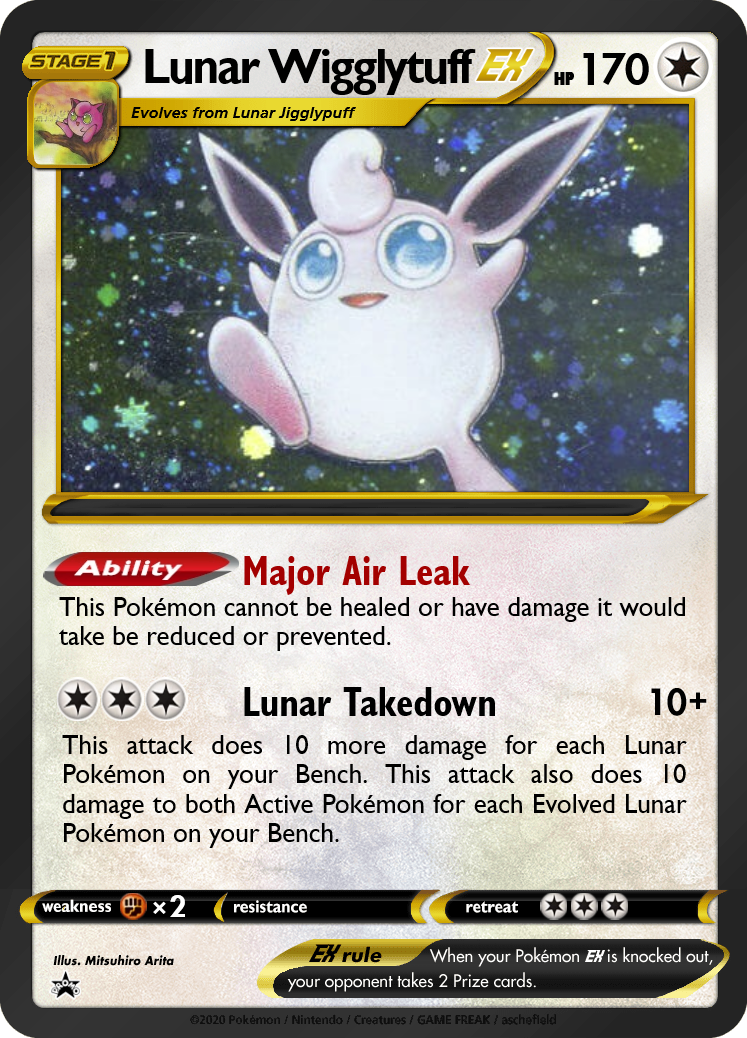
Wigglytuff's Do the Wave is nearly as iconic as Hitmonchan's Jab, meaning Wiigglytuff is incredibly deserving of the EX treatment. There's one problem, though: this line has a massive Base HP stat. As outlined in the original post, I want HP and Retreat Costs to mostly reflect in-game values, so I need a way to bring this evolution line "in line" with the rest of the format. The Air Leak abilities prevents any shenanigans with Pokémon Center, and Lunar Takedown can slowly rack up damage on Wigglytuff. Jigglypuff may still see play in stall decks; 120hp and access to Sleep is quite similar to Base Set Chansey with 120hp and Scrunch.
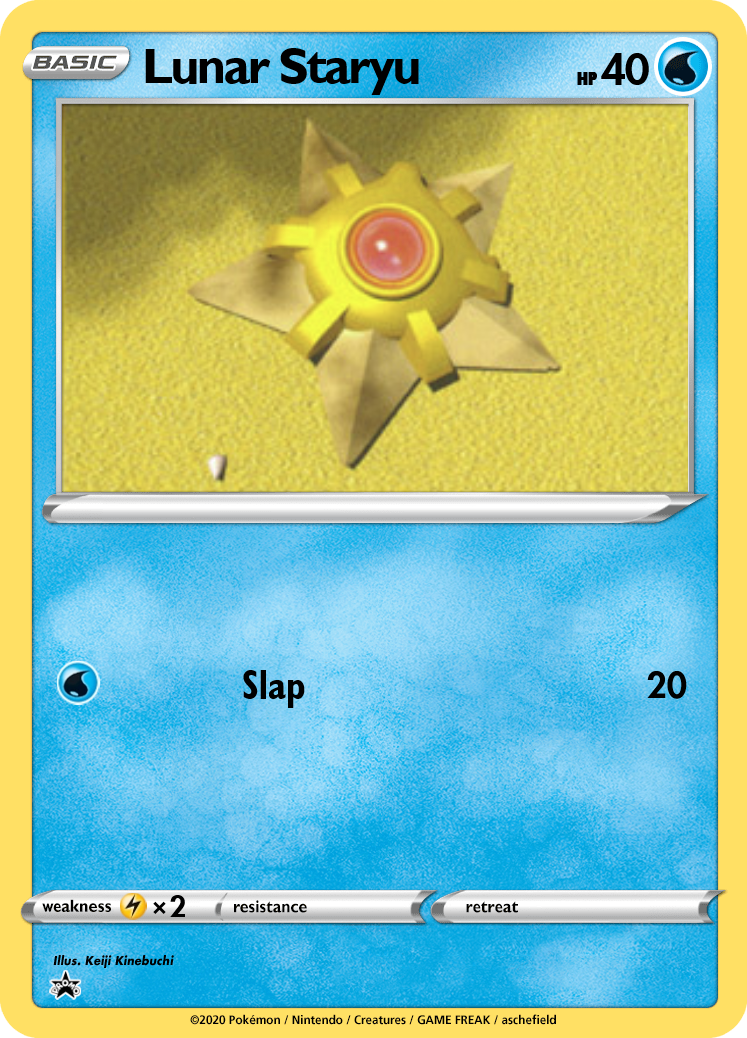
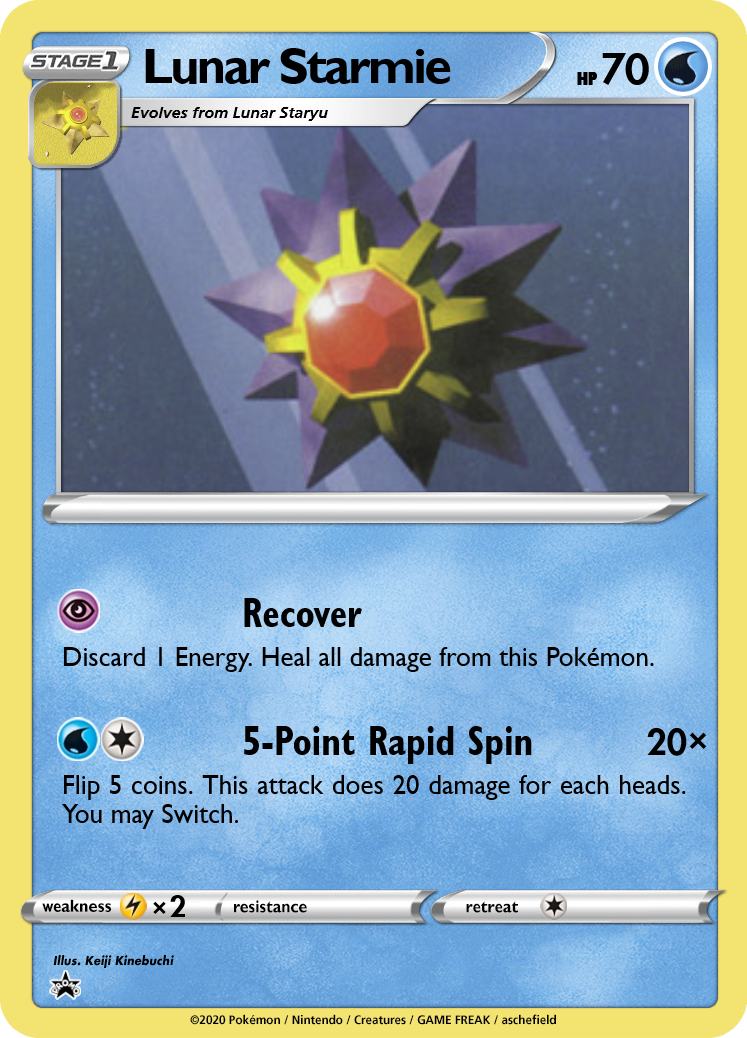
While seemingly disconnected with the rest of the Lunar Pokémon, Starmie loops itself in with 5-Point Rapid Spin. 70hp is a bit frail, but you can switch out to a Clefairy Doll, racking up damage on the opponent and sponging hits for your squad. Having a powerful attack with a Switch effect also makes it a potential partner for Pokémon with abilities that only work while Active (e.g. use Charizard to deal extra damage).
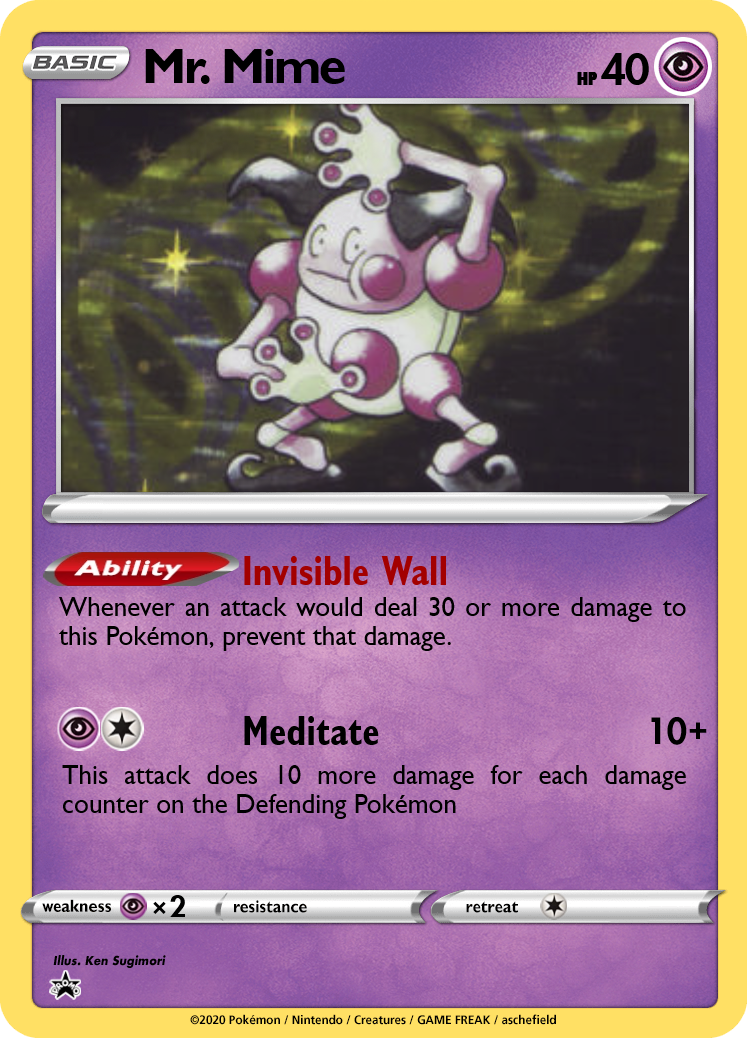
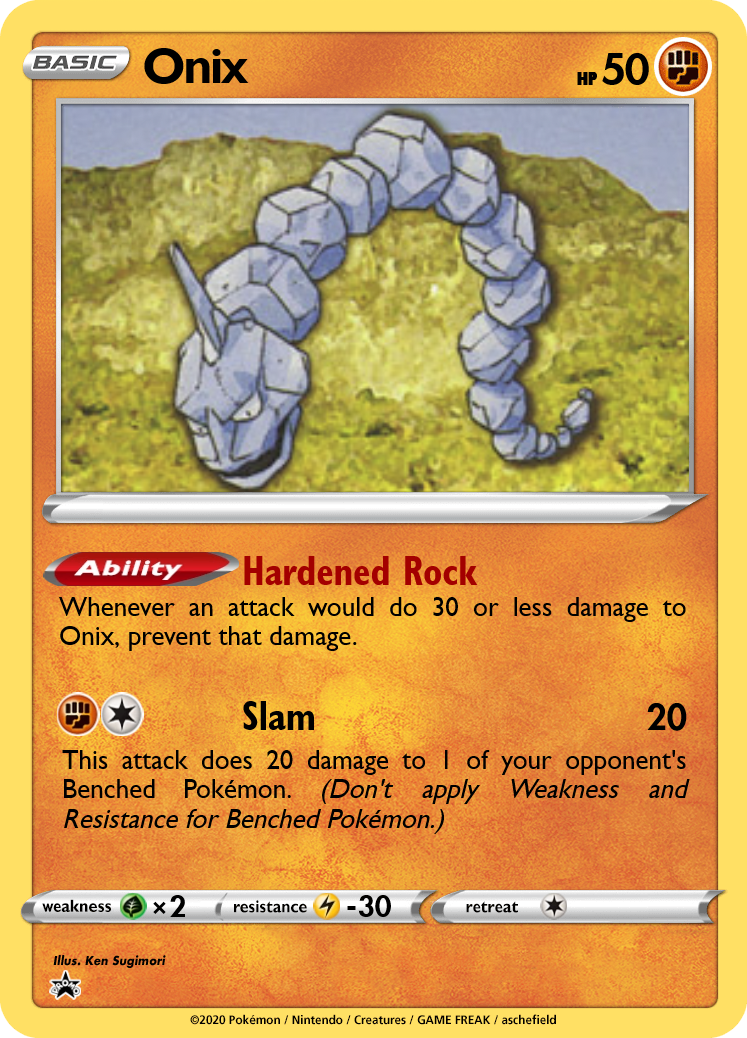
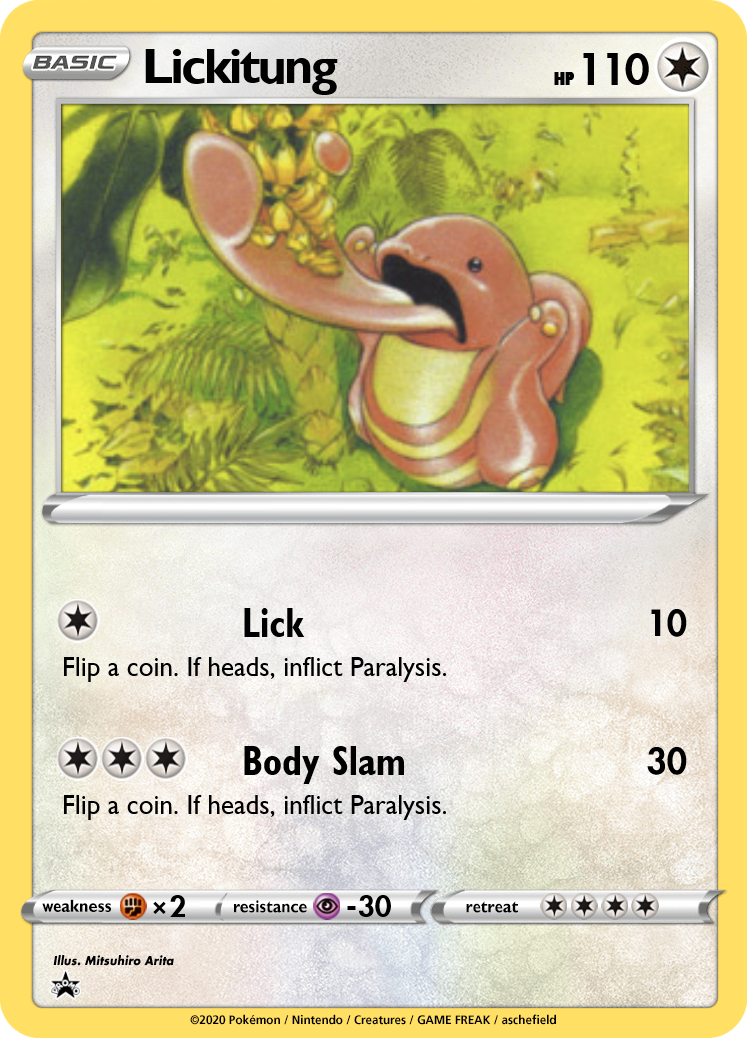
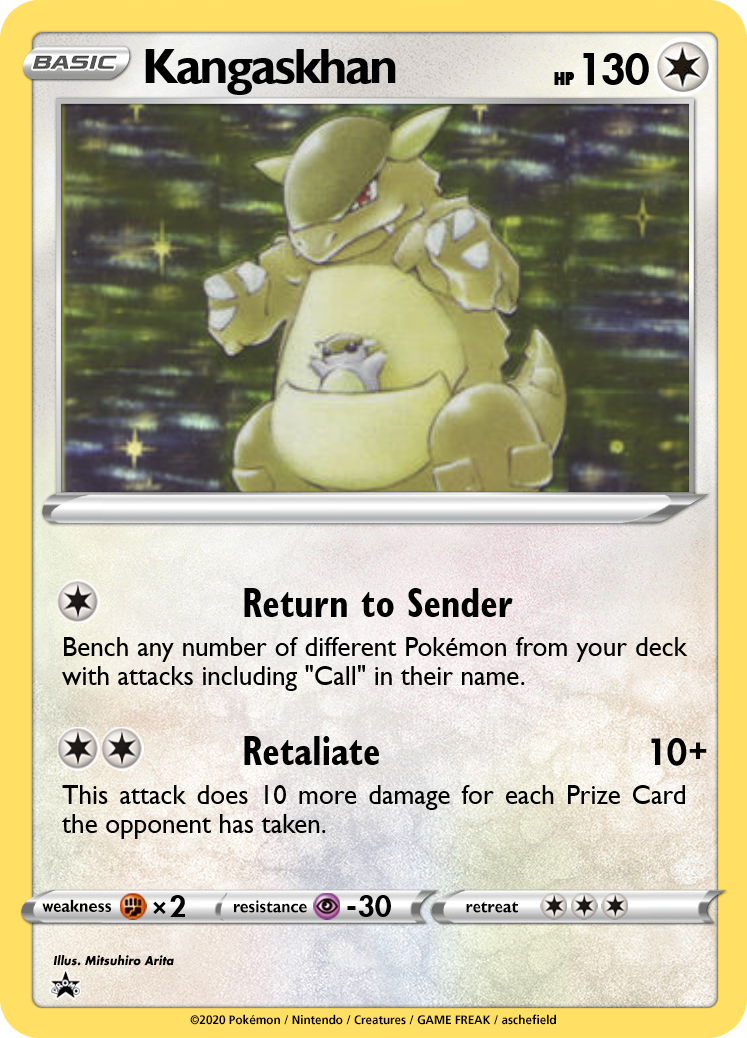
When people think of stall, they default to big basics like Lickitung or Chansey. But there are also "small basics"--cards like Mr. Mime or Dratini that reduce/prevent damage, providing huge value with Damage Swap or Potions. If control is too powerful, gameplay feels slow and dull. Some players hate control and want to see it removed from the game entirely, but if control is positioned healthily, the battle of resource attrition and decision making makes for interesting gameplay. While designing Base Set Evolution, I've done my best to provide multiple routes to combat control; Charizard needs no Energy to deal damage, Machamp can instantly take out any Basic, and scaling attacks like Tentacruel and Gengar can quickly turn the tide against decks that play too passively and let them. Without further ado, let's take a look at the cards!
Mr. Mime, like Doduo, is a great candidate for a 1:1 import! I've introduced a counterpart in Onix, a natural fit given the game stats of "incredibly low HP but sky-high defence". And, as a total coincidence, this is at least the 3rd "Fighting-Psychic" pairing in Base Set Neo.
Lickitung gets a slight HP boost compared to the original printing, which helps scale it a bit to the updated damage numbers. It's iconic Lick attack remains untouched, but I've redone the second attack to give Lickitung a potential attacking option.
Kangaskhan loses Fetch, making it much worse as a generic "big buff opener"; the quick card draw niche is already handled by Pidgey and Meowth. Instead, Kangaskhan gets Retaliate, opening up a late game reversal option that can be accessed with just 1 DCE.
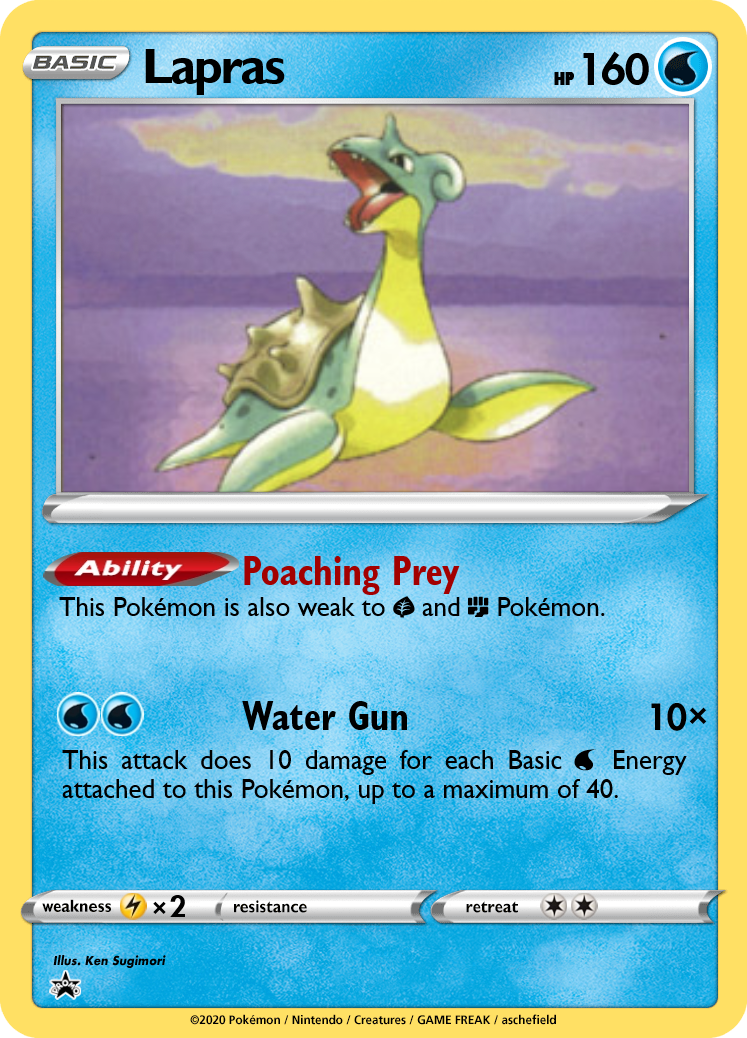
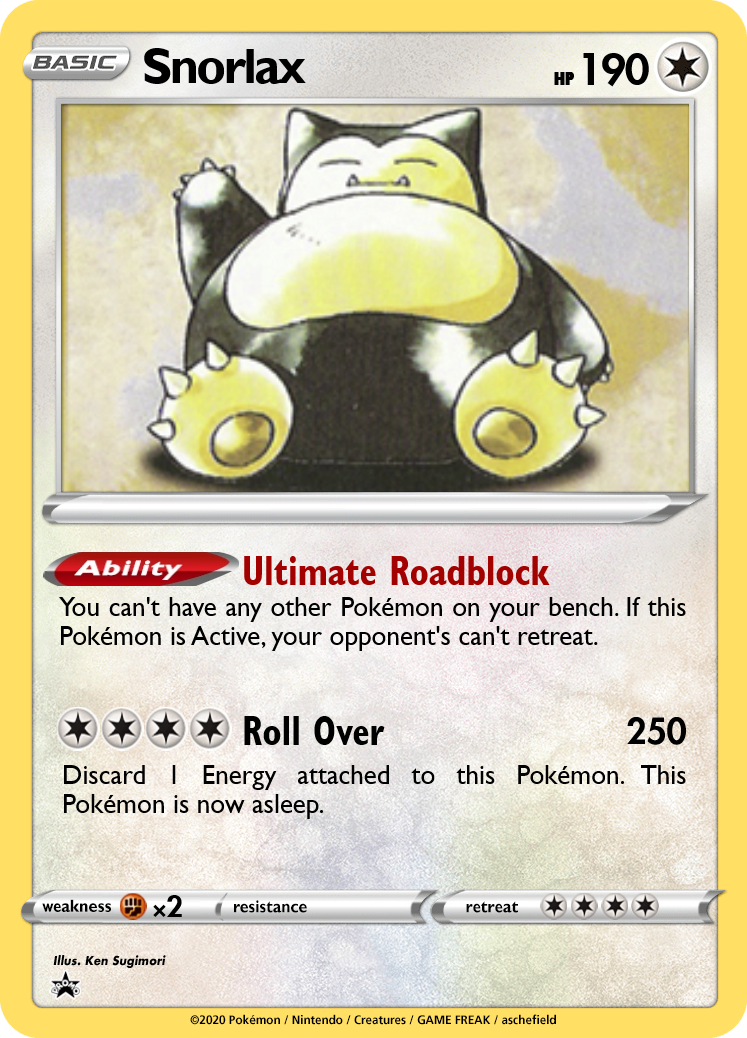
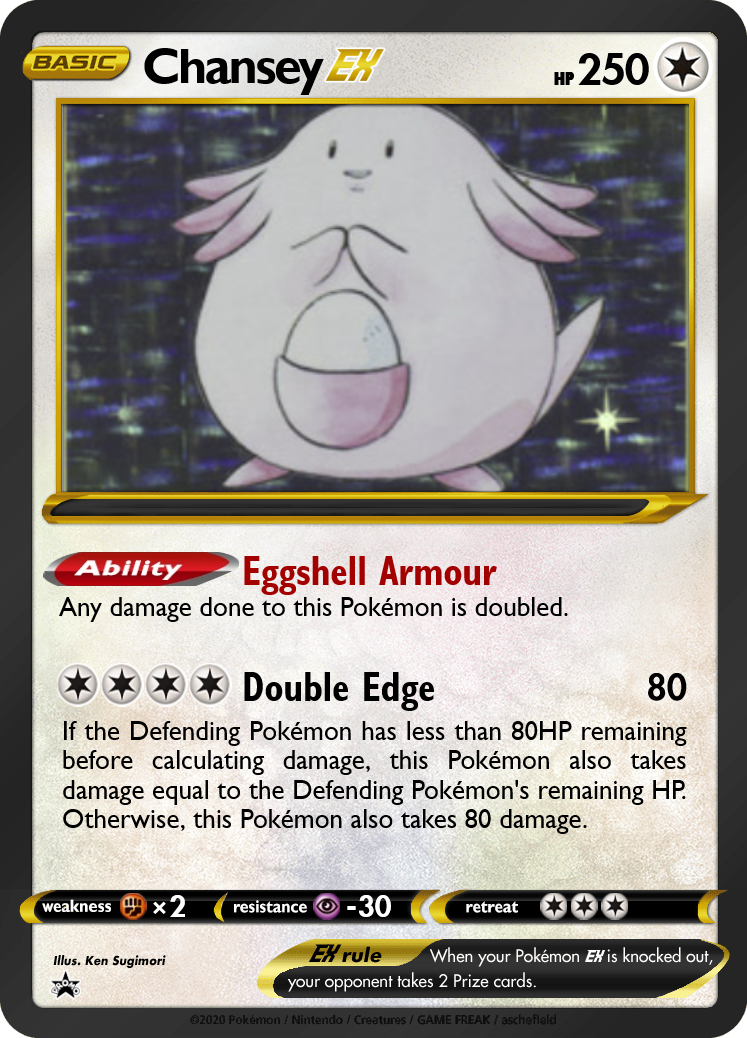
Once we get past Kangaskhan, we run into the same problem I had with Wigglytuff; this is the group with HP values I consider to simply be too high. Rather than nerf the stats, I've given them all negative drawbacks. Lapras has 3 weaknesses, essentially making it an 80HP Pokémon in many matchups. Snorlax is a huge risk as opening with it prevents you from fielding any backups if it gets Knocked Out. As the 6th Prize Card, however, it can shine as "the ultimate roadblock", trapping the opponent while repeatedly healing. And if there's a major threat being built up, Roll Over can OHKO any Pokémon in the game, regardless of damage reduction effects. Snorlax is meant to be a "raid boss" or, in Pokémon terms, a static encounter--see how the opponent fares throwing their entire team at a Pokémon that eclipses them all.
Rounding out the group is Chansey, a card I knew I'd be giving an EX. This was one of the first of the entire 200+ card set that I designed. By doubling the damage Chansey takes, the effective health pool is, on its own, effectively the same while Potions become less effective for it. However, if it remains safely on the bench, it's now an even better sponge for Damage Swap.
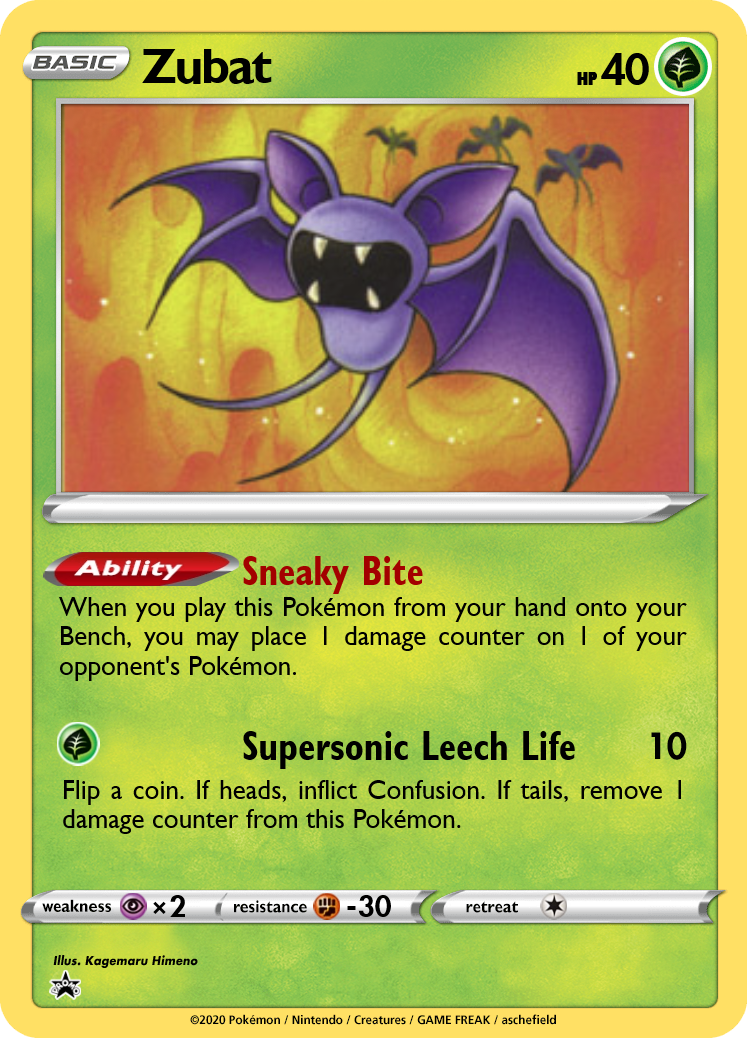
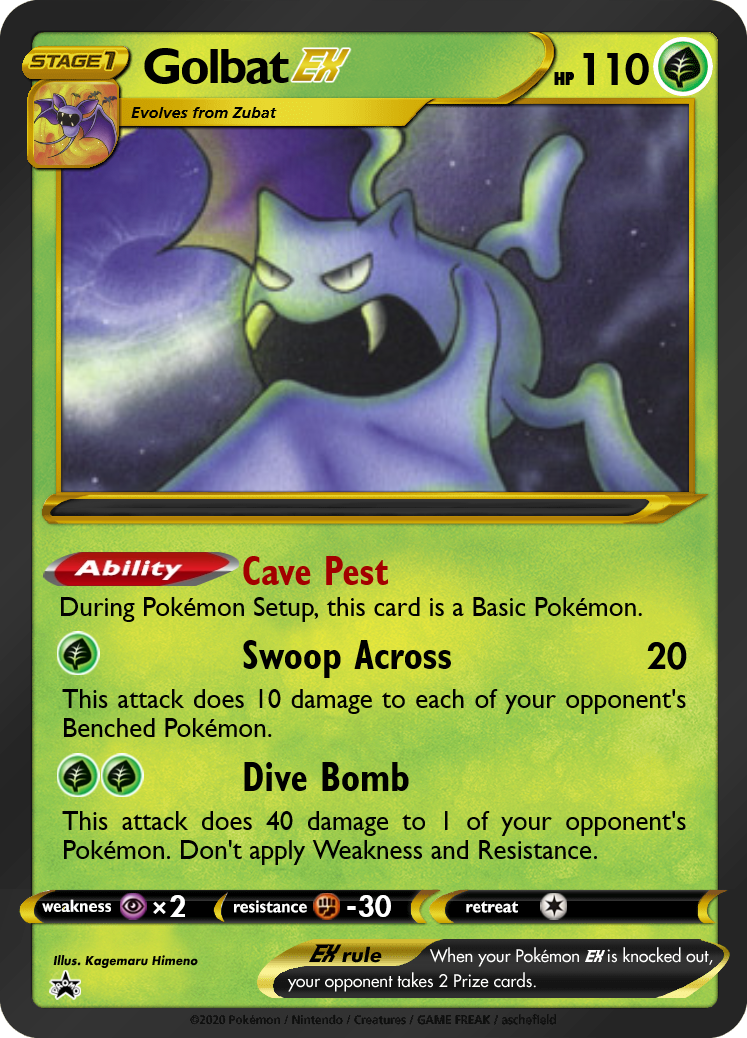
This line is inspired by the Phantom Forces prints, almost certainly the most famous/successful set of bats in the TCG's history. (That said, Crobat has had Surprise Bite as far back as the Neo sets!) Cave Pest is a small bonus, letting you keep all 4 Zubat in your opener for Sneaky Bites. You can't use Scoop Up or Mr. Fuji on Pokémon-ex, so you'll need to rely on the basics if you want to make the most use of Zubat.
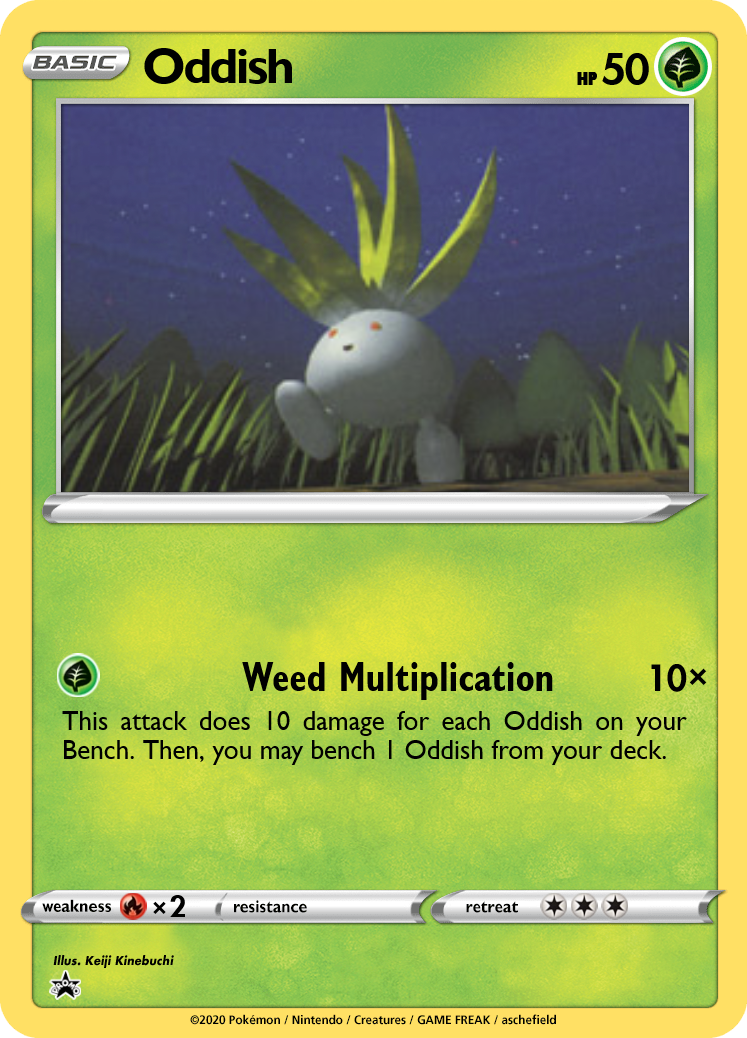

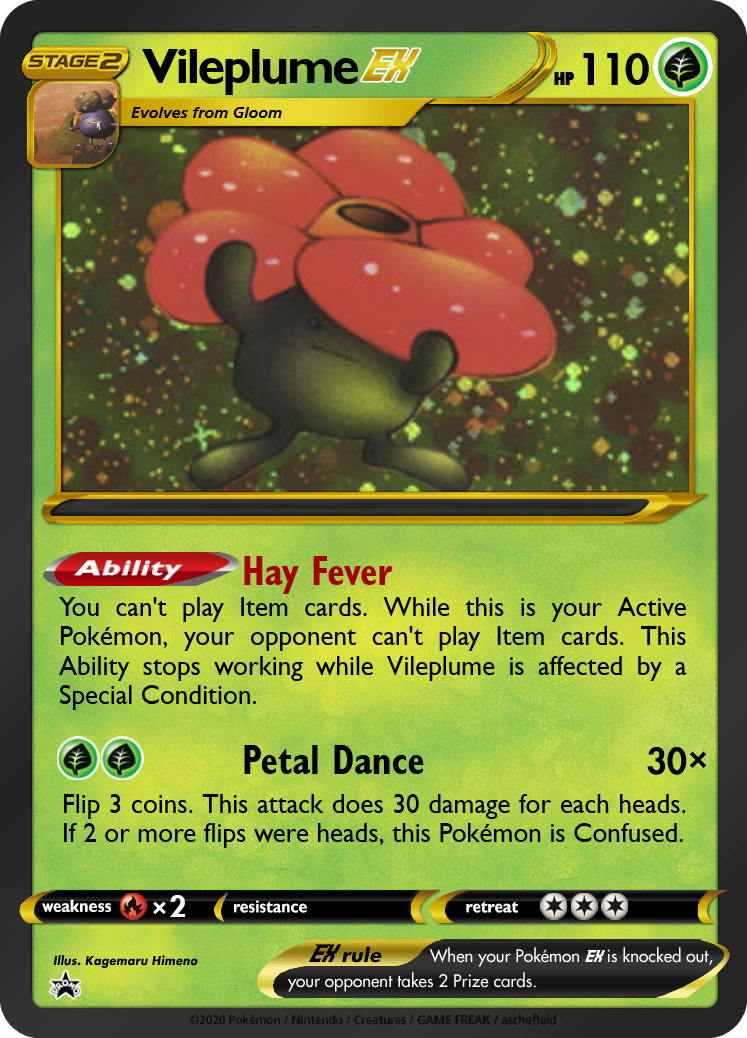
Vileplume had multiple prints early on, but the most recognizable has to be Hay Fever. Like with Muk, I've taken some steps to mitigate this controversial Ability. Namely, it has to be the Active Pokémon to take effect, and the Petal Dance attack risks turning off Hay Fever right as your opponent starts their turn. And, of course, it gives up 2 Prize Cards as a Pokémon ex.
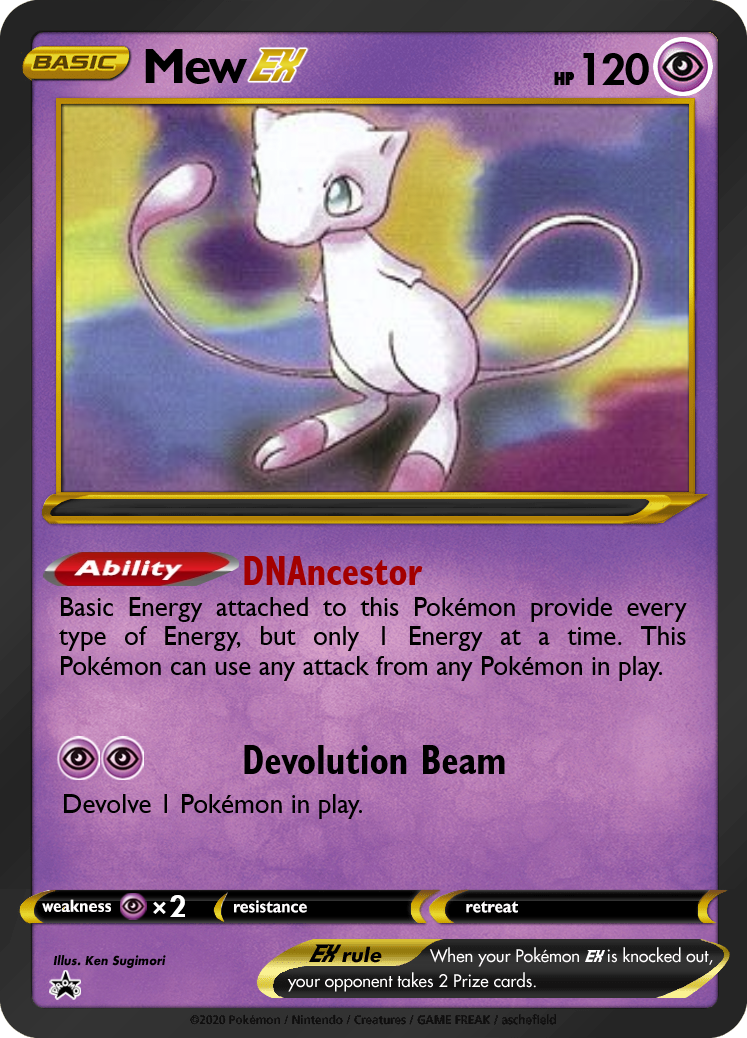
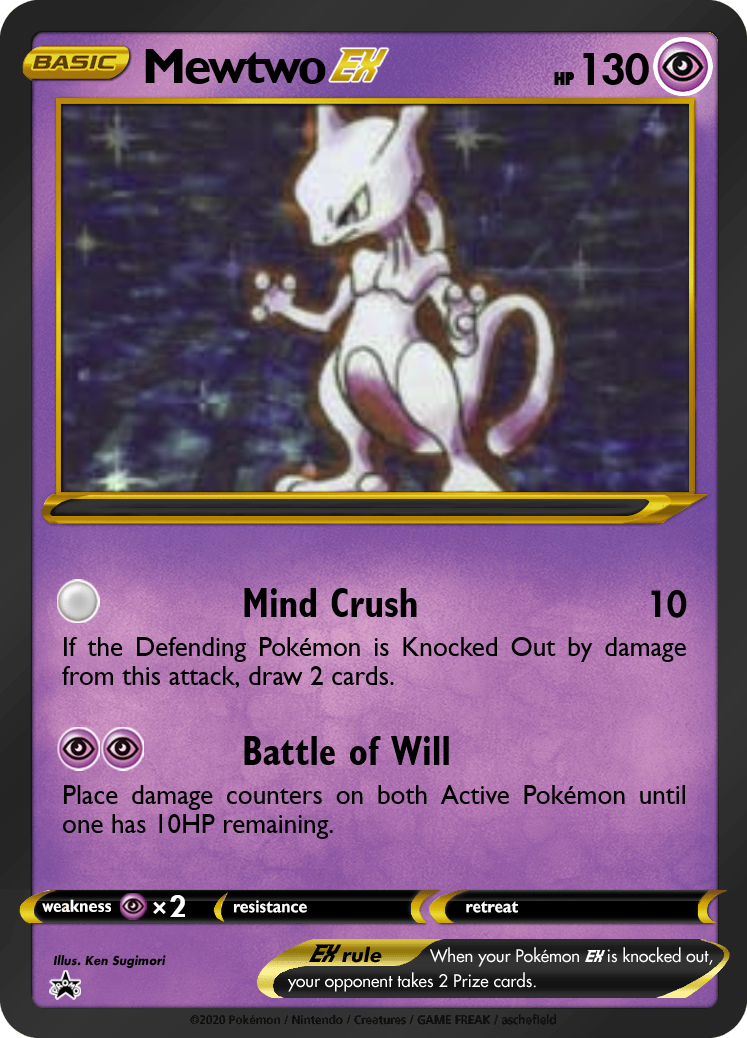
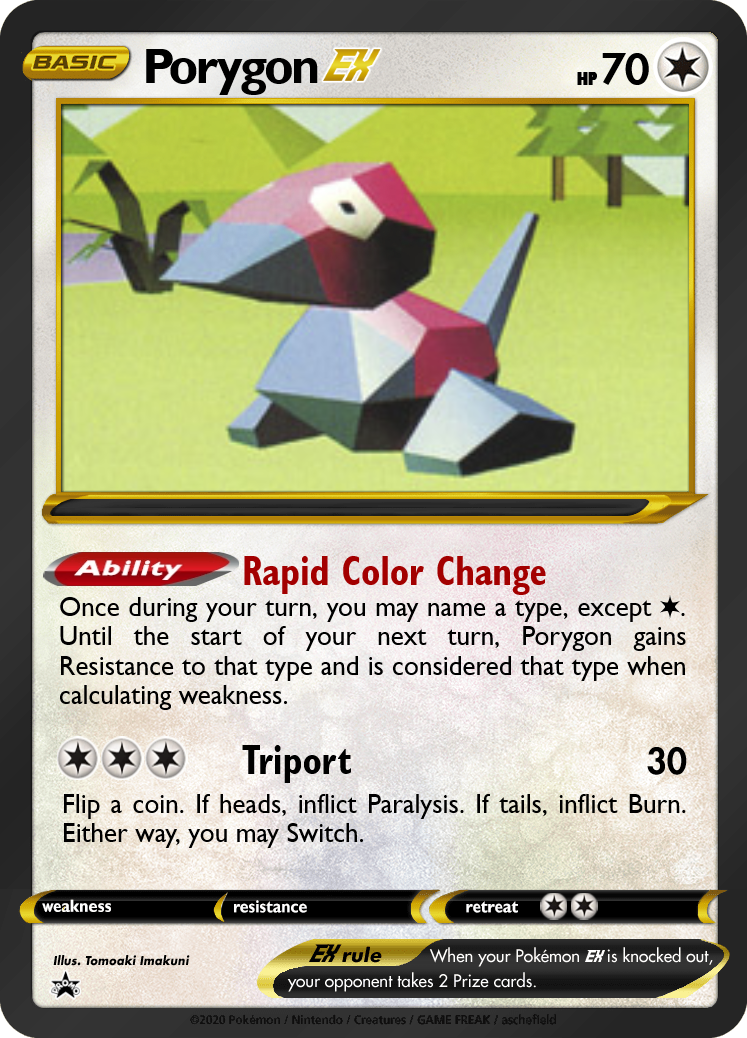
Mew's most iconic trait has to be copying other Pokémon's attacks, and I think DNAncestor fits the theme quite well. You'll need the right amount of Energy, but Mew's versatile DNA turns everything into Rainbow Energy, making it possible to copy the opponent's attacks in any matchup.
Mewtwo's design is a carryover from when I was giving it the 50% ex boost rather than the 20% final-stage boost. It felt wrong to give such a lore-powerful Pokémon a negative ability, so at 160HP (like Lapras), I wanted its gameplay to involve whittling itself down from its uncontrolled psychic power. Being the ultimate Pokémon, it has the only 0-Energy attack in the game! Combine Mewtwo with Raticate's Super Fang to take Knock Outs and draw more cards, or try to find ways to increase the damage of Mind Crush.
Porygon's original card simply doesn't work; Conversion and Conversion2 are terrible attacks. We fix this with Rapid Color Change, turning Porygon into a Pokémon that can hit anything for Weakness. Or, if you're a more defensively inclined player, you can declare the same type as your opponent's Pokémon to take advantage of Resistance. With 70HP and an attack that allows the player to Switch, Porygon is an alternative to Lunar Starmie for decks trying to implement a hit-and-run strategy. It'll be up to the players to figure out if the more powerful effect and status as a Basic is worth the extra prize card and Energy needed to attack.
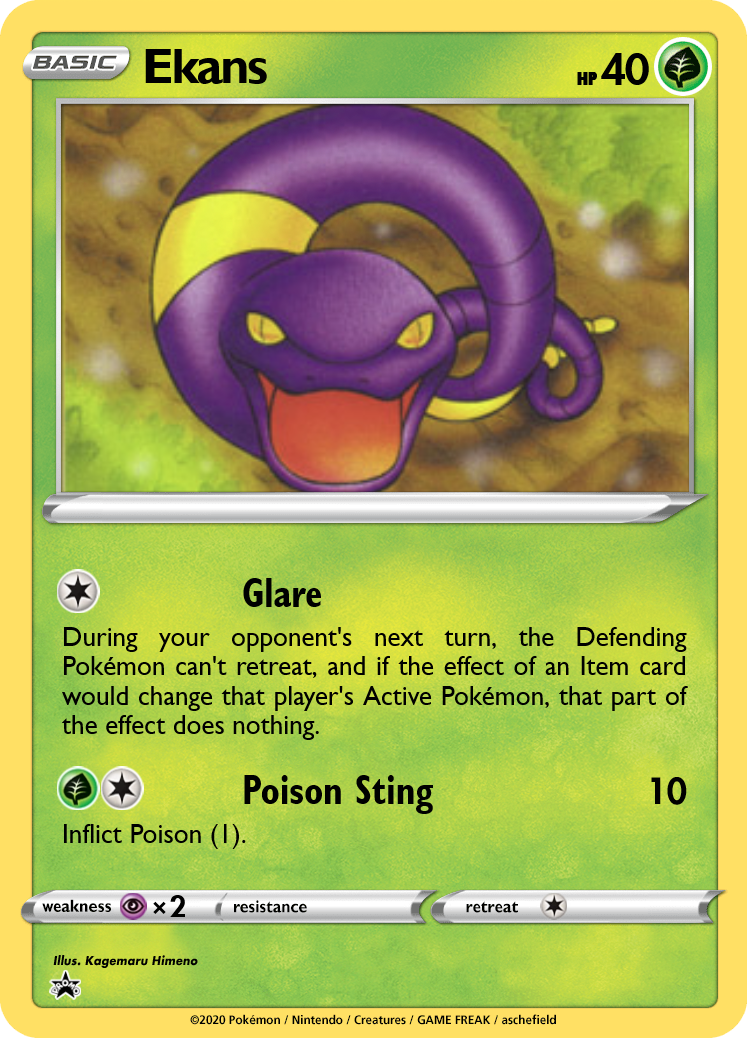
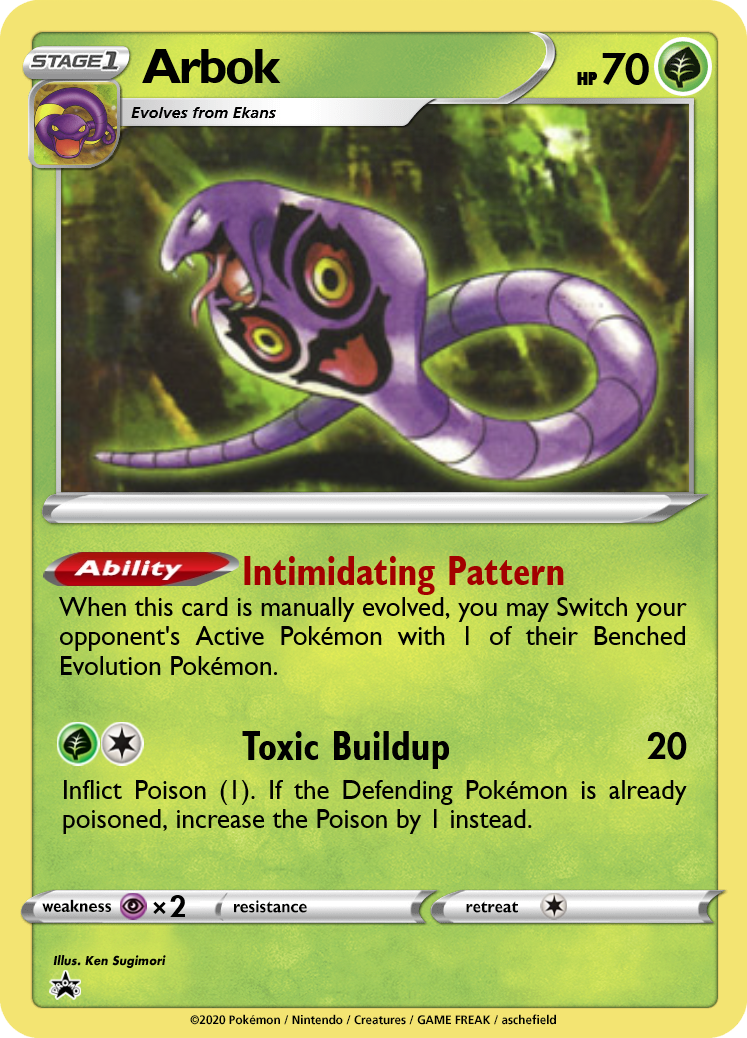
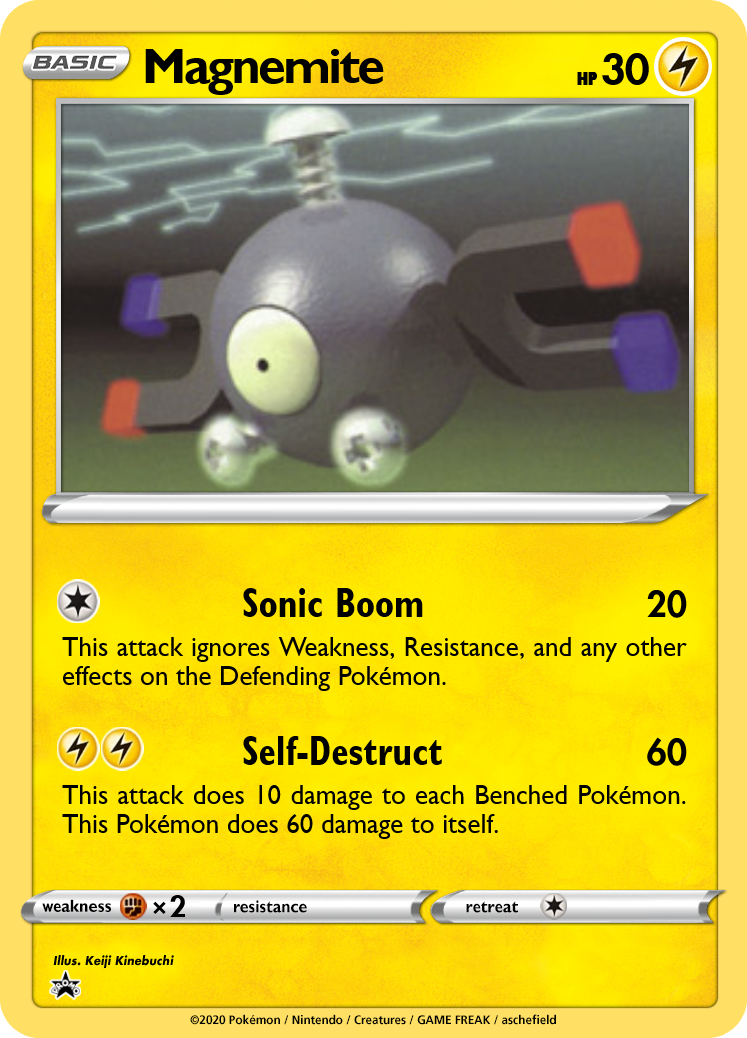
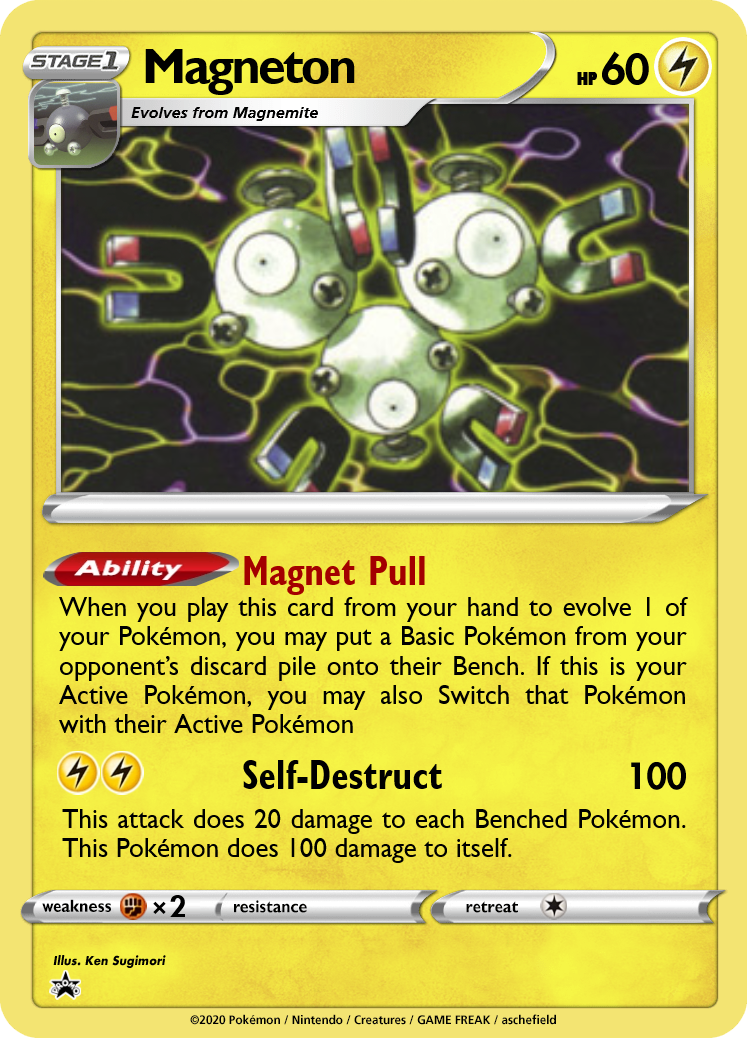
Arbok's ability comes from DAA Ariados, performing Gust on any evolved Pokémon. This version of the effect prevents players from taking advantage of vulnerable low-HP basics...
but Magneton's Magnet Pull is perfect for doing just that! Pull something straight from the Discard Pile into the active spot, then either Self-Destruct or Retreat to bring in your main attacker. At 100 damage, Magneton won't be able to protect itself with Defender, but you also have the chance to score a KO against 2-Prize Pokémon like Hitmonchan, Electabuzz, and Porygon ex!

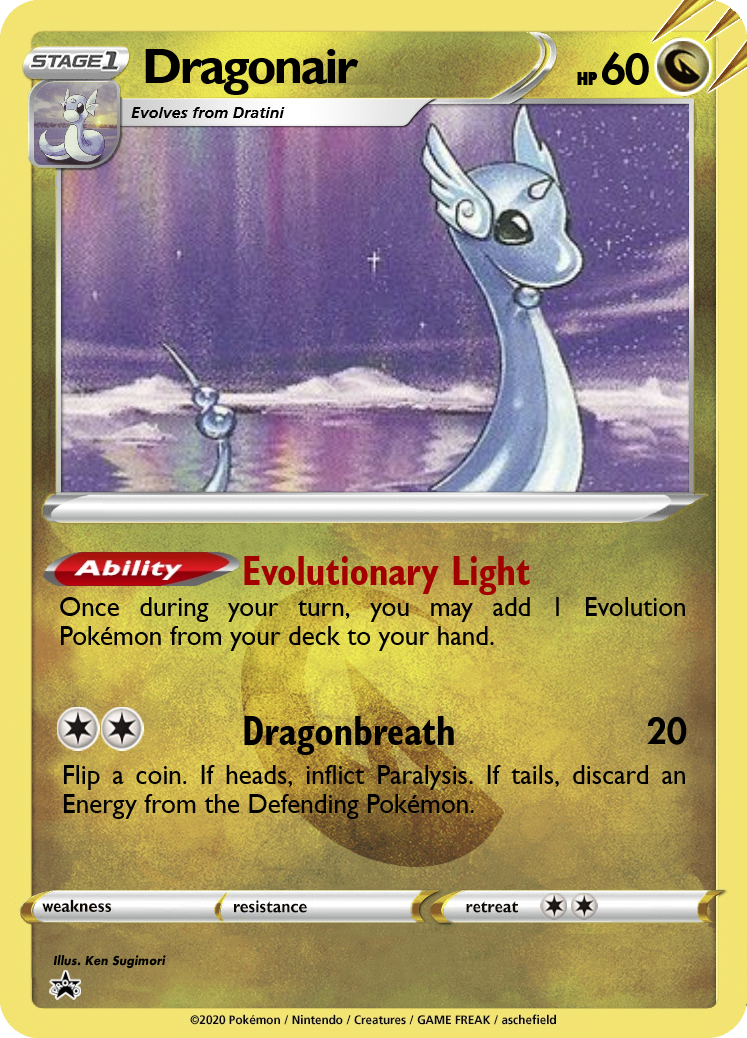

As a Stage 2, Dragonite takes gusting to the next level by preventing the opponent from retreating. Alongside each member of this line having a useful Abiliity and no Weakness, they're a great choice for anyone looking to round out their deck with support Pokémon. One design note is that Dragonair initially had "Evolutionary Call" as a [C] attack; that iteration had direct synergy with Kangaskhan, but was weaker overall. If the Dragonite line ends up being too dominating, I'll probably revert it back.

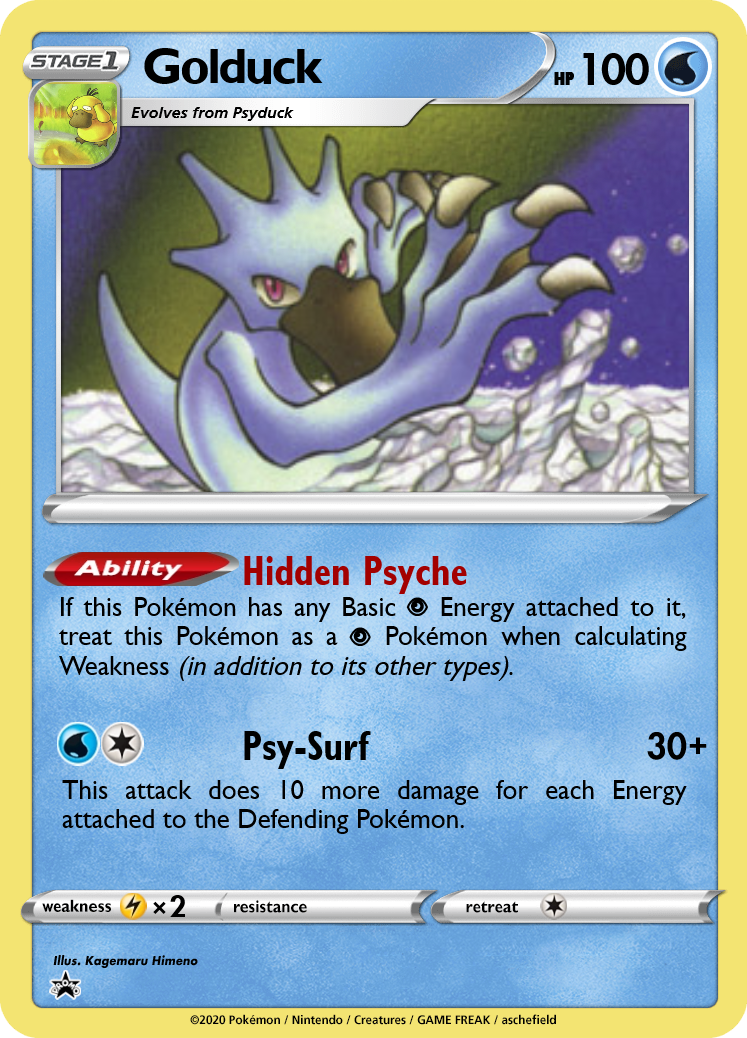
Psyduck's Headache receives a nerf, but Psyduck can lean into its control identity even more with the Wrong Team ability. It can be used to block bench space, forcing them to choose between support Pokémon and attackers. It is also particularly effective against Lunar Pokémon; Nidoking needs exclusively Lunar Pokémon on the bench for its Ability, while Nidoqueen and Wigglytuff both scale on bench size. At the same time, Psyduck can be used as a tool against stall decks as well. If you're struggling to take your final prize card, you can now place a 50hp Basic on the opponent's field to gust or snipe with a Pokémon like Hitmonlee.
Golduck is a much simpler design, functioning similarly to Poliwrath and increasing the amount of Weaknesses water decks can hit.
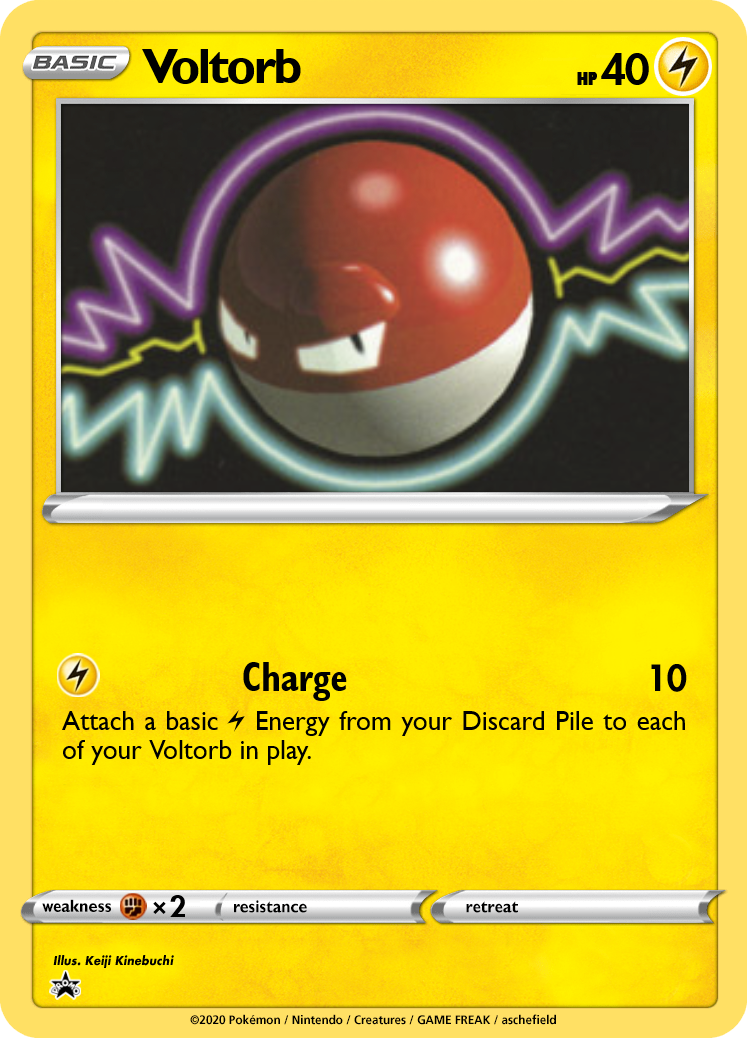
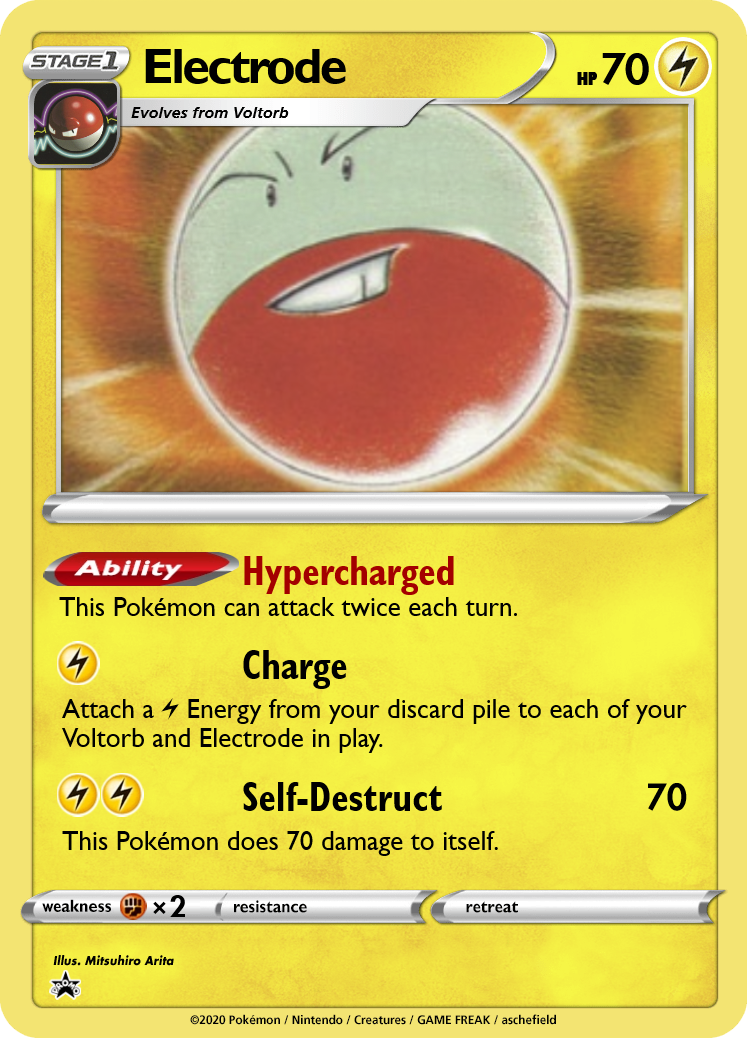
During Journey, I mentioned giving Marowak the equivalent of Buzzap because I had other plans for Electrode. Electrode is (1) the fastest Pokémon in the game (2) a generator (3) boomboom. Buzzap successfully covers 2 and 3, but Hypercharged is a fun Ability to have in a meta. Charge can flood energy onto the board, and the Defender + Self-Destruct combo can take multiple knockouts in one turn. It's a huge early-game bomb offering the opportunity for donks, but is likely to have a bad prize trade in prolonged games.
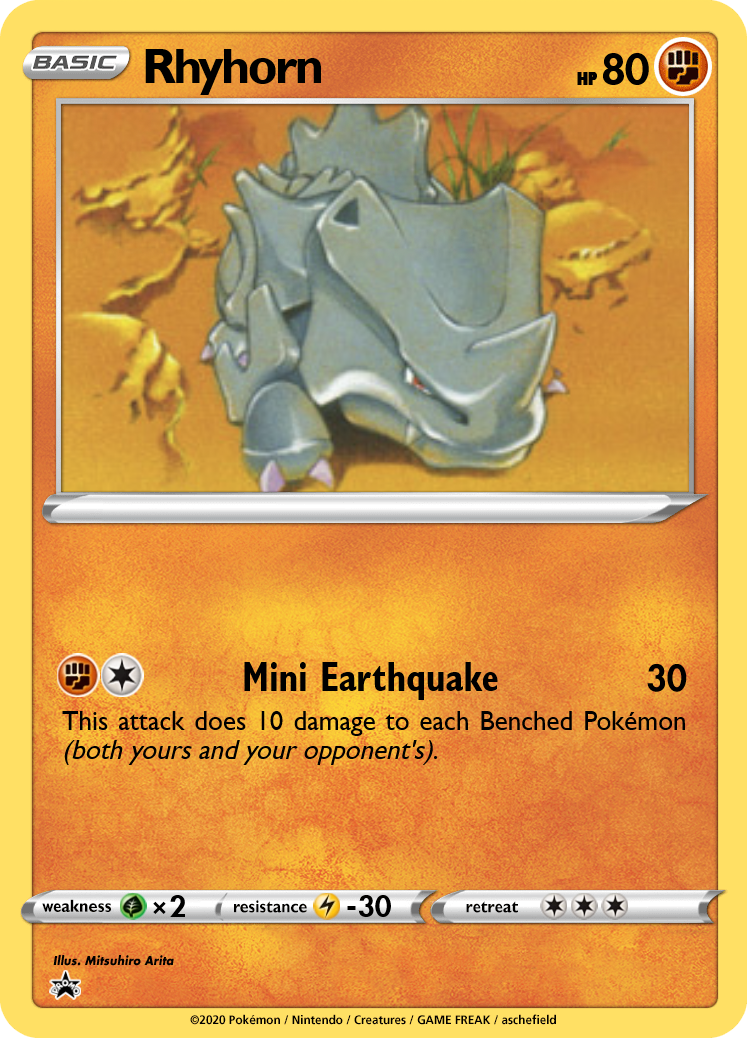
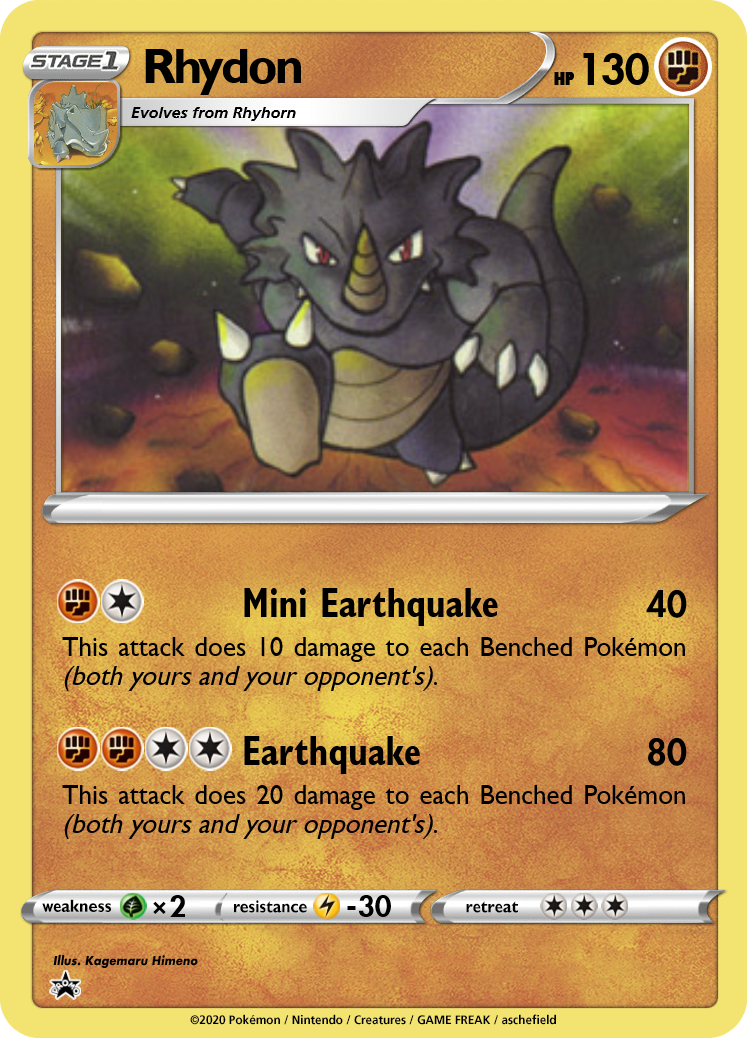
The Rhydon line is another Earthquake user. It has more HP than Dugtrio and Golem, but it has no Ability, making it function more as a standalone attacker. There isn't too much to say about them.
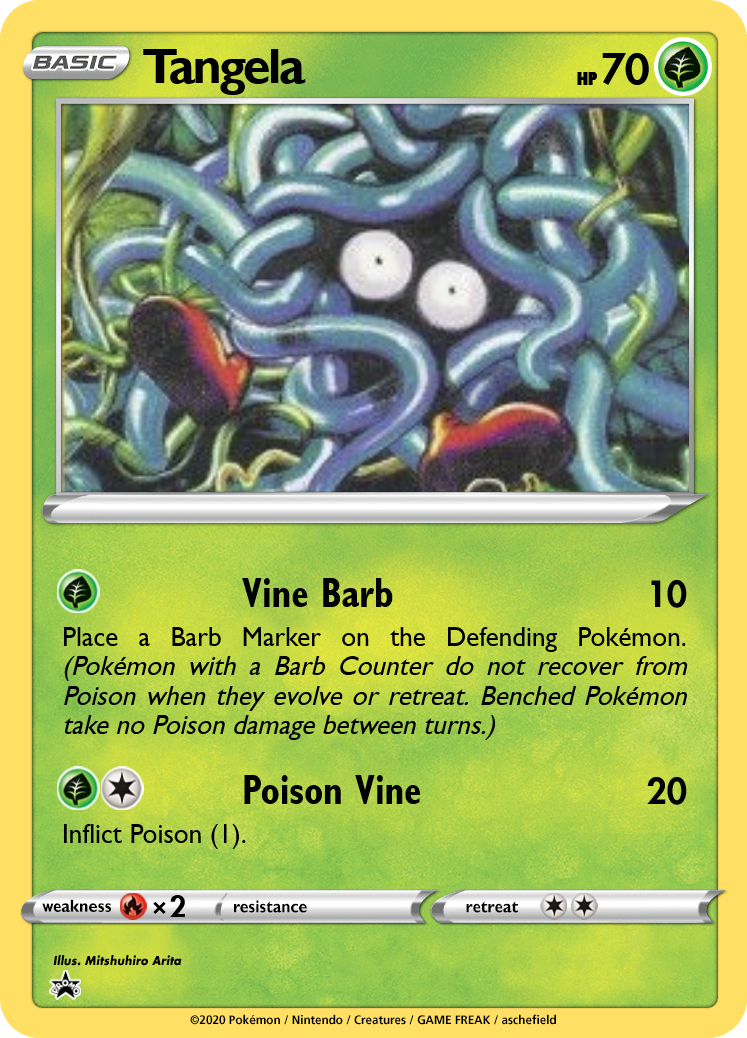
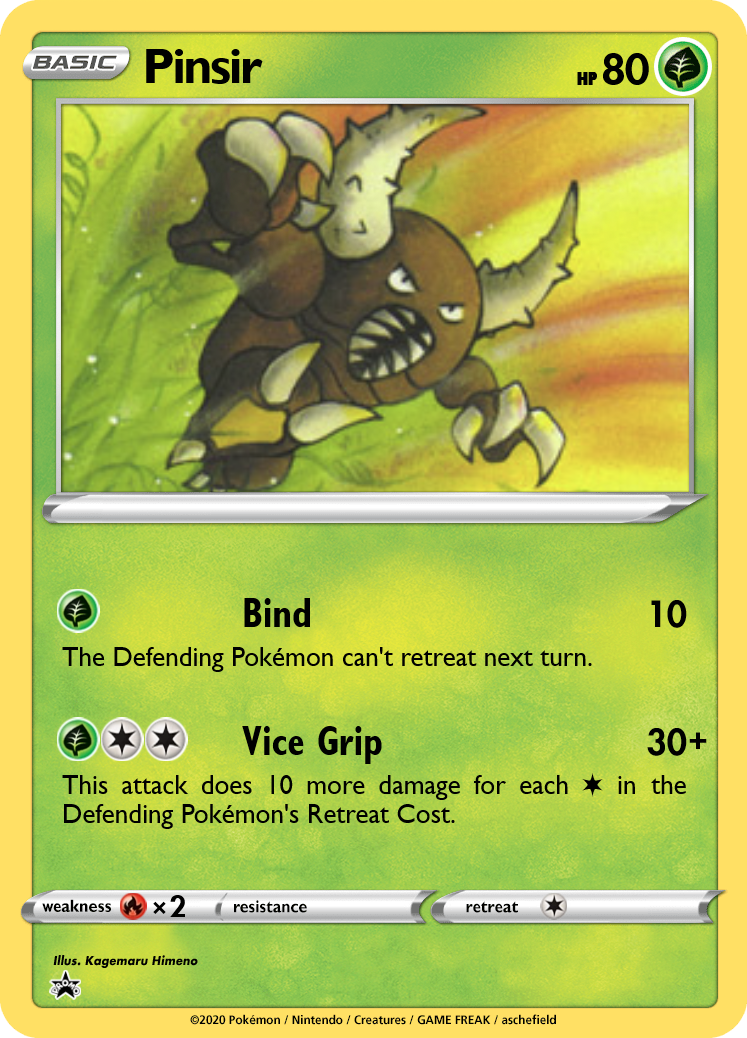
Tangela is a Basic meant to support the Poison decks. Vine Barb can keep special conditions on the field, while Poison Vine inflicts the status and gets Weezing/Venusaur online.
Offensive Tentacruel decks should appreciate the inclusion of Pinsir; having an alternate attacker in the deck prevents Tentacruel from slowly being depleted (thus lowering the opponent's Retreat and decreasing your damage output).


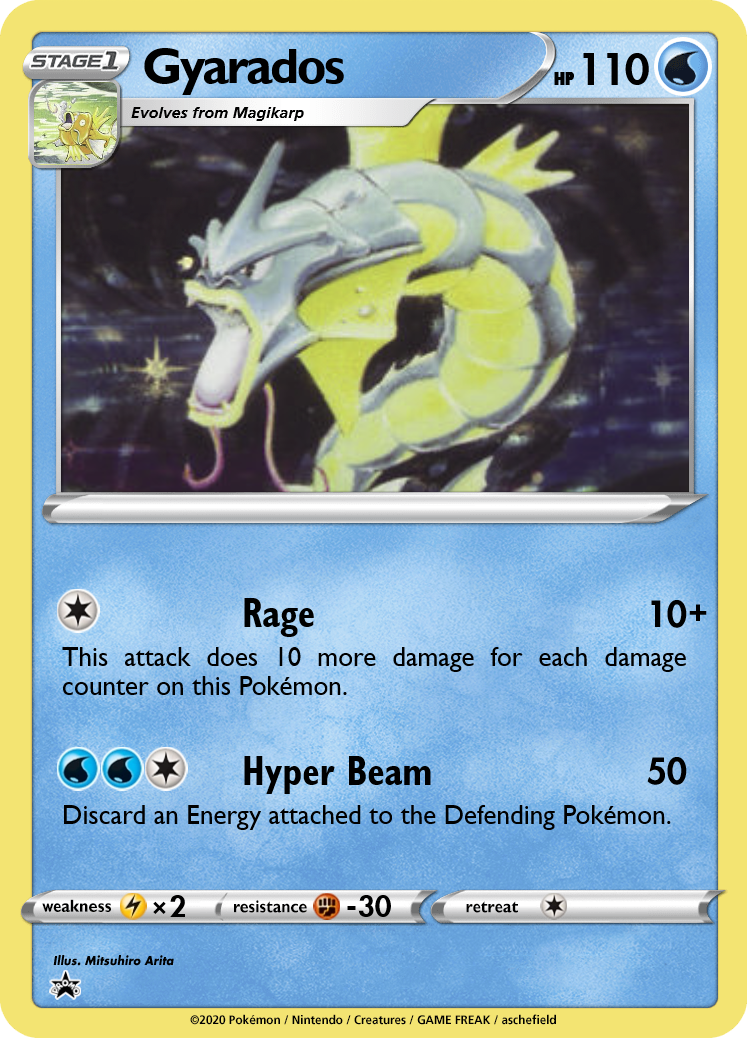
Farfetch'd now always deals damage with Leek Slap, making it a strong early-game Pokémon. Pot Smash has also been buffed to make Farfetch'd more consistent overall.
Magikarp gets an ability to help with it's low HP. The lack of attacks is a reflection of it being "useless" in battle. Base Set Gyarados has some fame for being the original Rain Dance partner, but in my humble opinion, the Pokémon is much more famous for firing off Hyper Beams (despite not being the greatest user of the move in the video games...). Compared to Poliwrath's Whirlpool, you'll need an extra energy for Hyper Beam, but this is offset by being on a Stage 1 with the same total HP and a lower retreat cost.


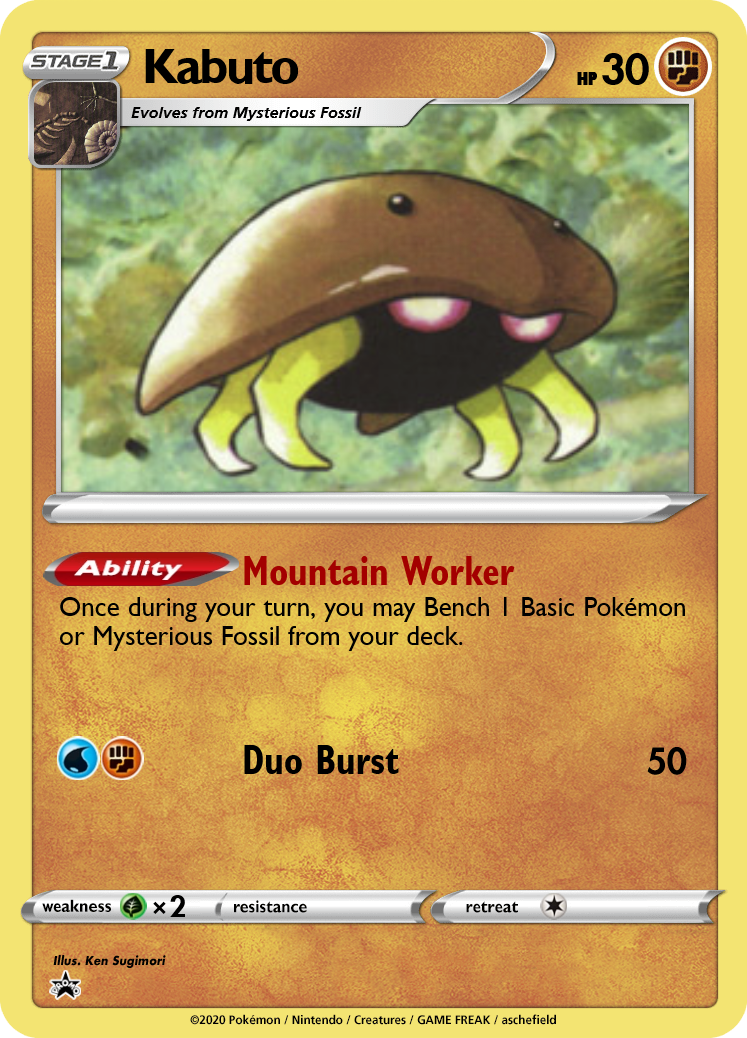
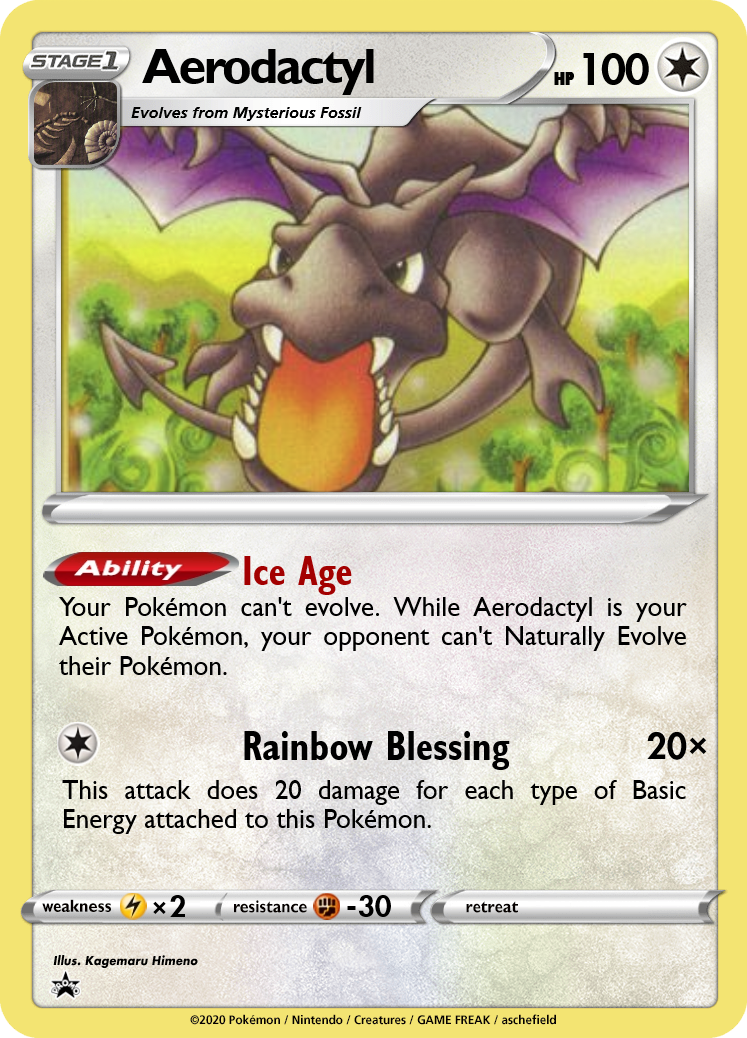
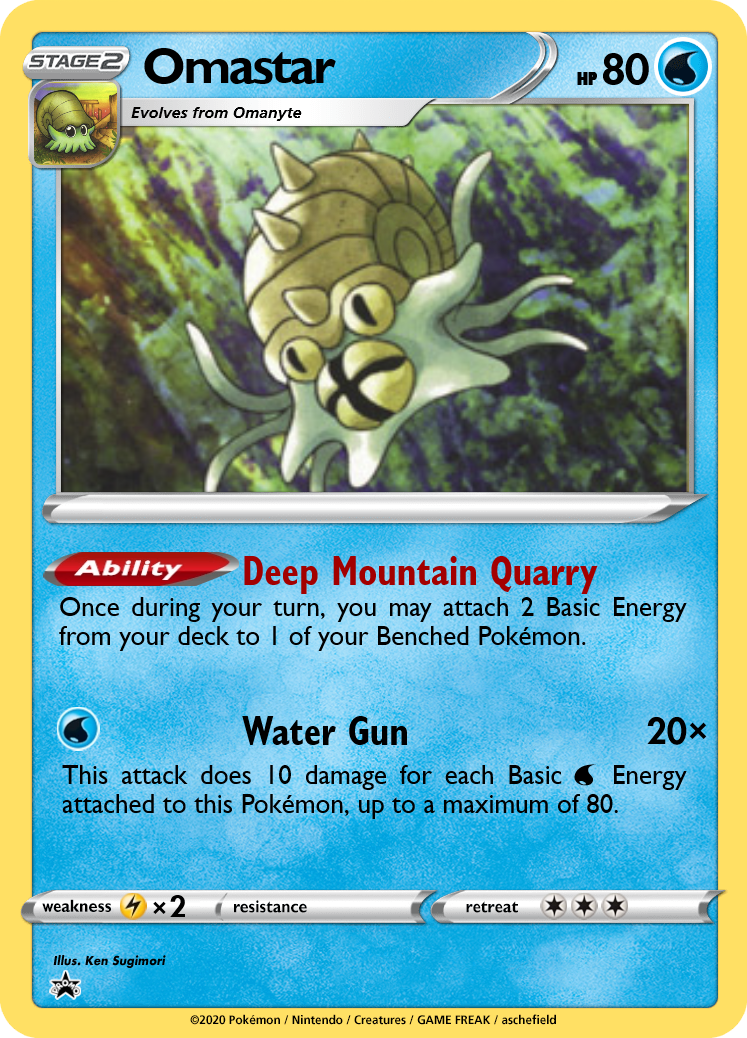
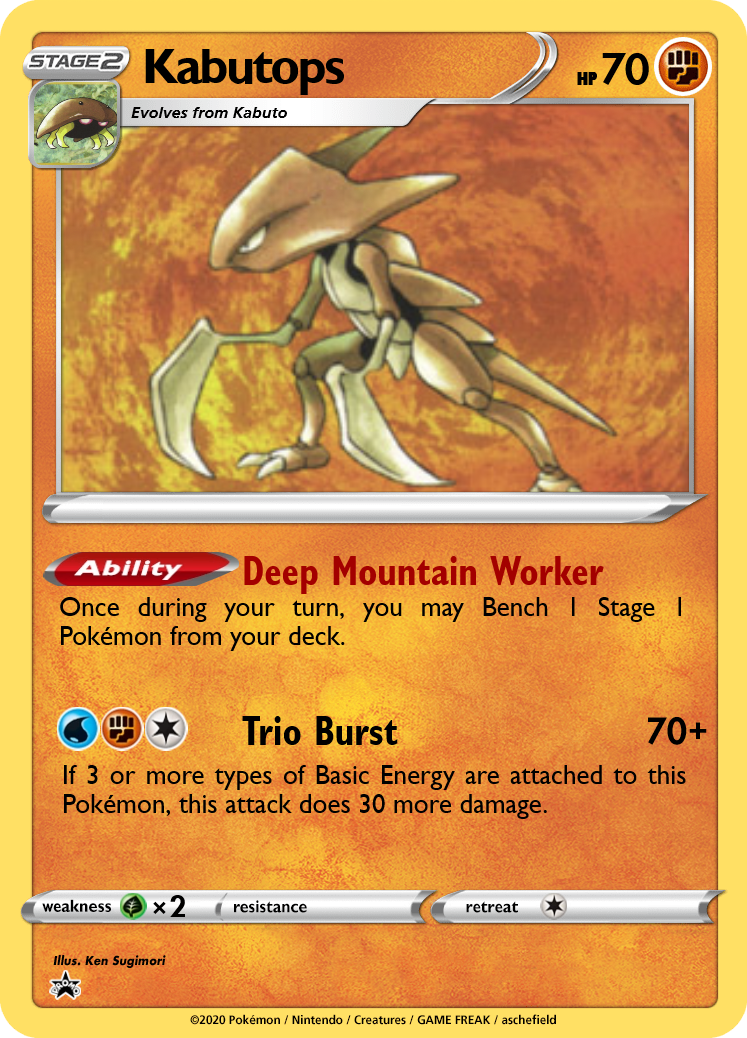
Fossil Kabutops may be the single worst Pokémon of the original Base-Fossil format. When you have multiple lines all sharing the same Basic, and that Basic can't even be placed down at the start of the game or searched for via Balls, you have a problem on your hand. Fossil Pokémon need powerful abilities to be worth using.
Aerodactyl has a strong identity in the original format, and it is one I find worth preserving. However, I've introduced methods for the opponent to circumvent the effect. Aerodactyl must be active, allowing it to be Gusted out, and it only prevents manual evolution, meaning players can use cards like Pokémon Breeder to circumvent the effect.
Omastar and Kabutops both offer effects that support Aerodactyl (and plenty of other Pokémon, too). Omastar can power up most attackers in just one turn, while Kabutops lets you consistently bring out Evolution Pokémon...if you're able to get out this Stage 2 Pokémon first.
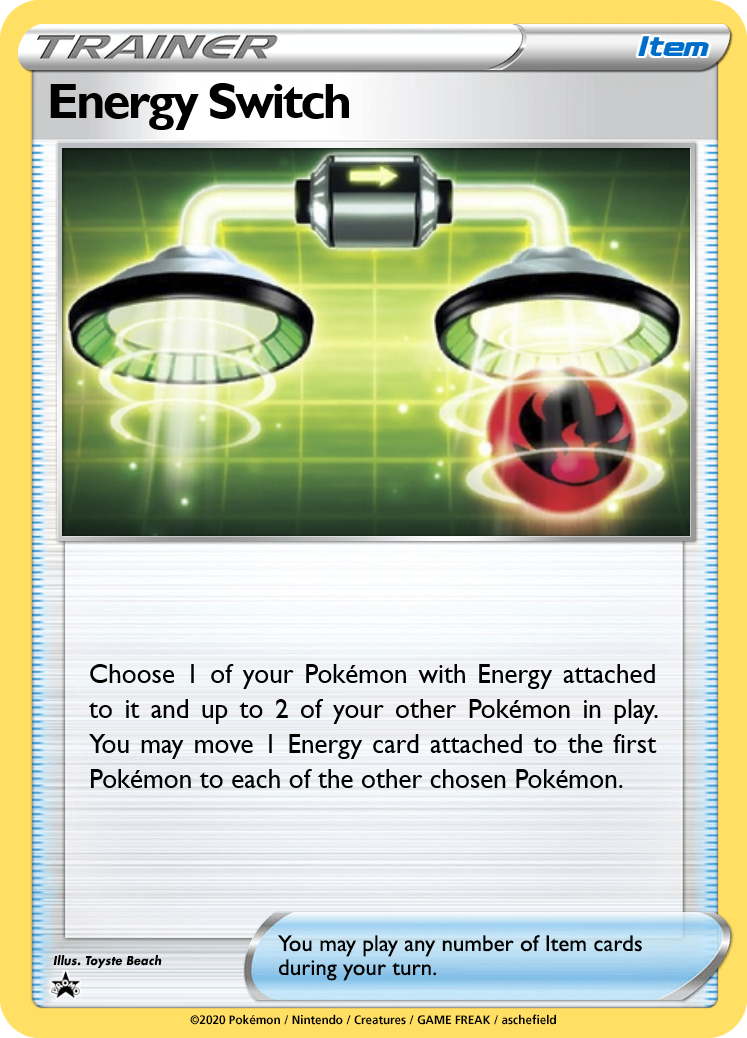
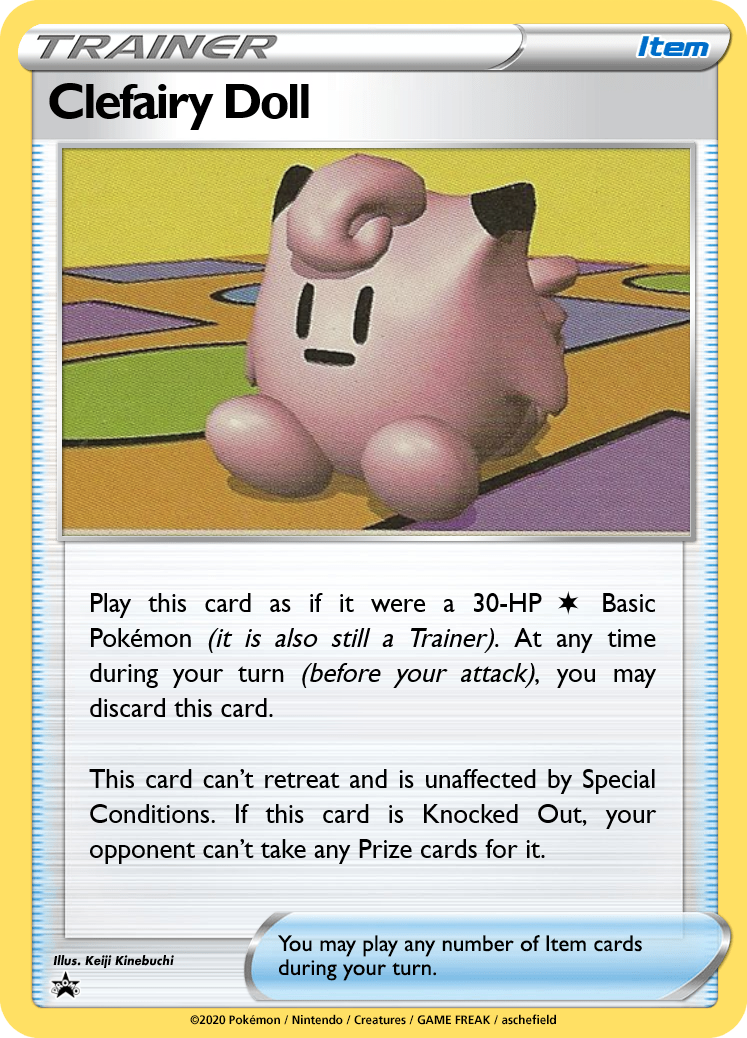
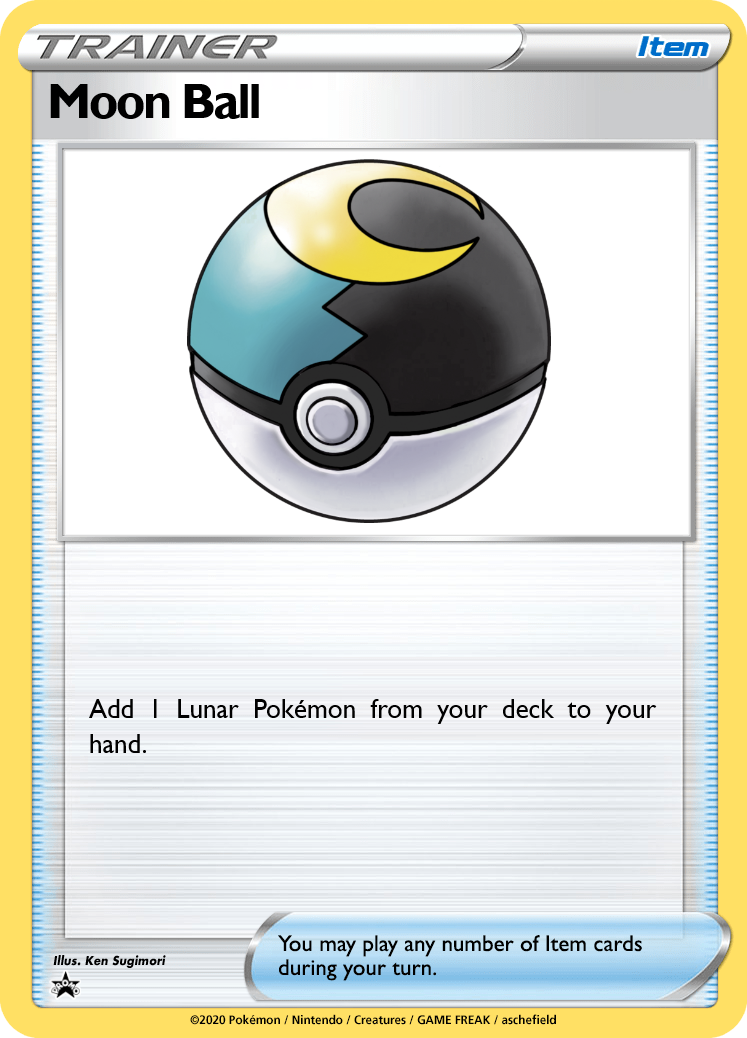
Energy Switch was the final card added to the set, as I wanted a way to take advantage of Charge without allowing Electrode to simply attach to every Pokémon. It also has some utility in other decks to move energy away from weakened pokemon.
Clefairy Doll is an import, and Moon Ball helps provide a reason for the Lunar tag.

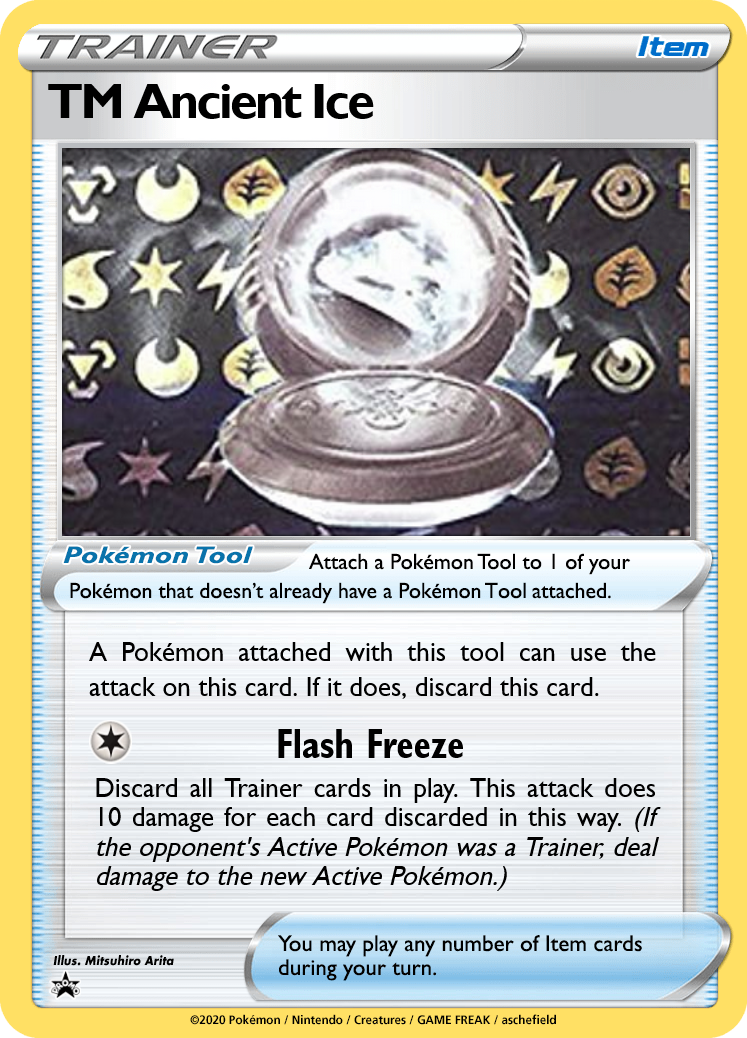
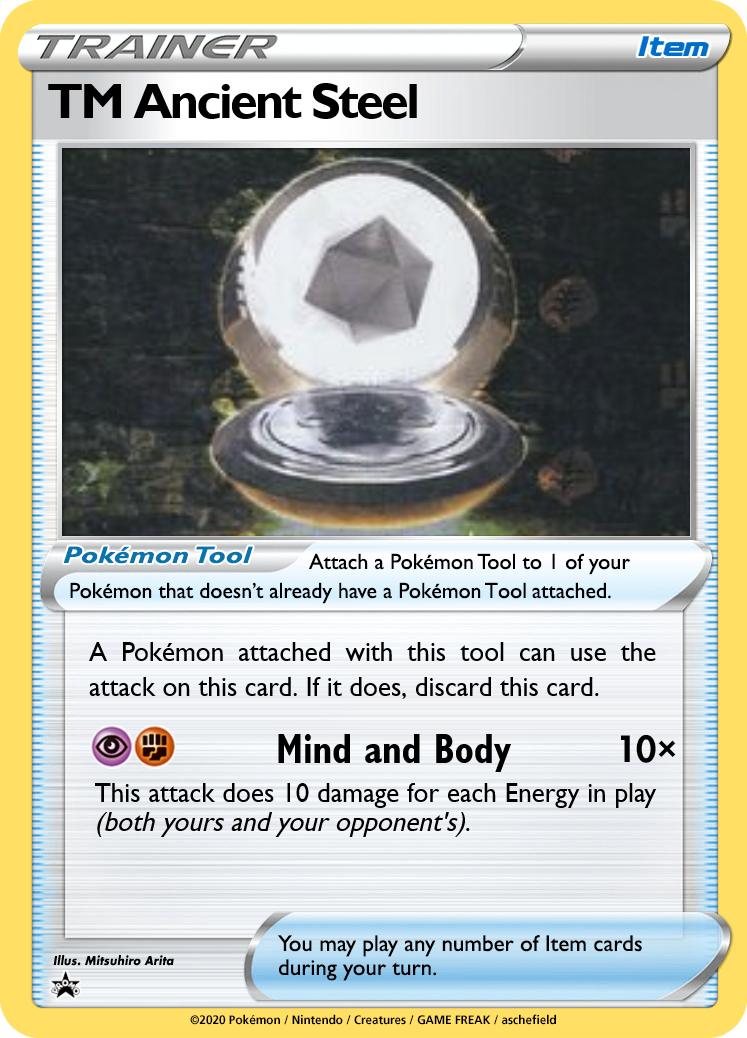
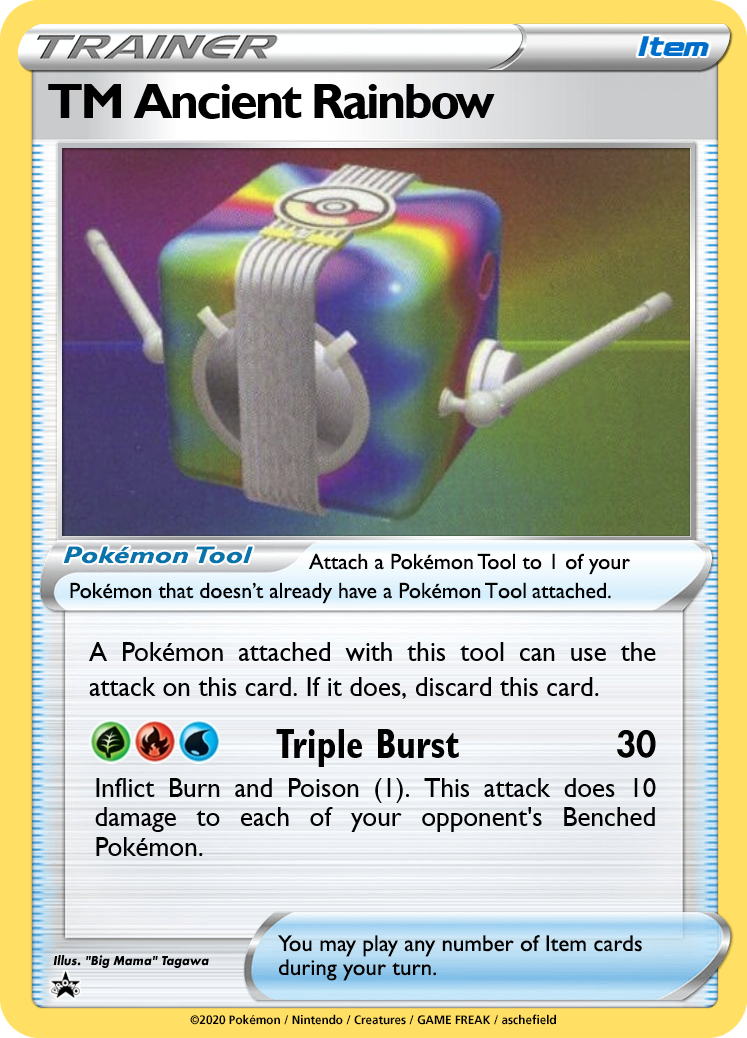
With Electrode's Hypercharge and Porygon's type-changing ability, TMs make an appearance, offering decks using those cards new options beyond the attacks printed on the cards. Compared to the original Ancient Technical Machine cards, I've removed the requirement to use an Evolution Pokémon. Additionally, the cards no longer immediately discard themselves at the end of the turn, but rather after they get used to attack. This allows players to load them up, use Professor Oak, and save the attack for the right time.
Reversion is an accessible mass devolution attack which can slot into spread damage decks to take multiple KOs on Pokémon losing HP as they devolve.
Flash Freeze provides this format with a method of tool and stadium removal (Clefable's Sales Rush can only discard your own cards). It also punishes any control players that overbench Dolls/Fossils.
Mind and Body is a way to punish Rain Dance decks. It could work inside of them as well, but Blastoise and Seadra both already have scaling 10x damage attacks, so Mind and Body isn't likely to be worth the requirement of Double Rainbow Energy.
Triple Burst deals 60 damage to the active after Special Conditions. The energy cost is tricky, but Mew could make use of it thanks to DNAncestor. Alternatively, decks using Omastar and Double Rainbow Energy can power up the attack as well.
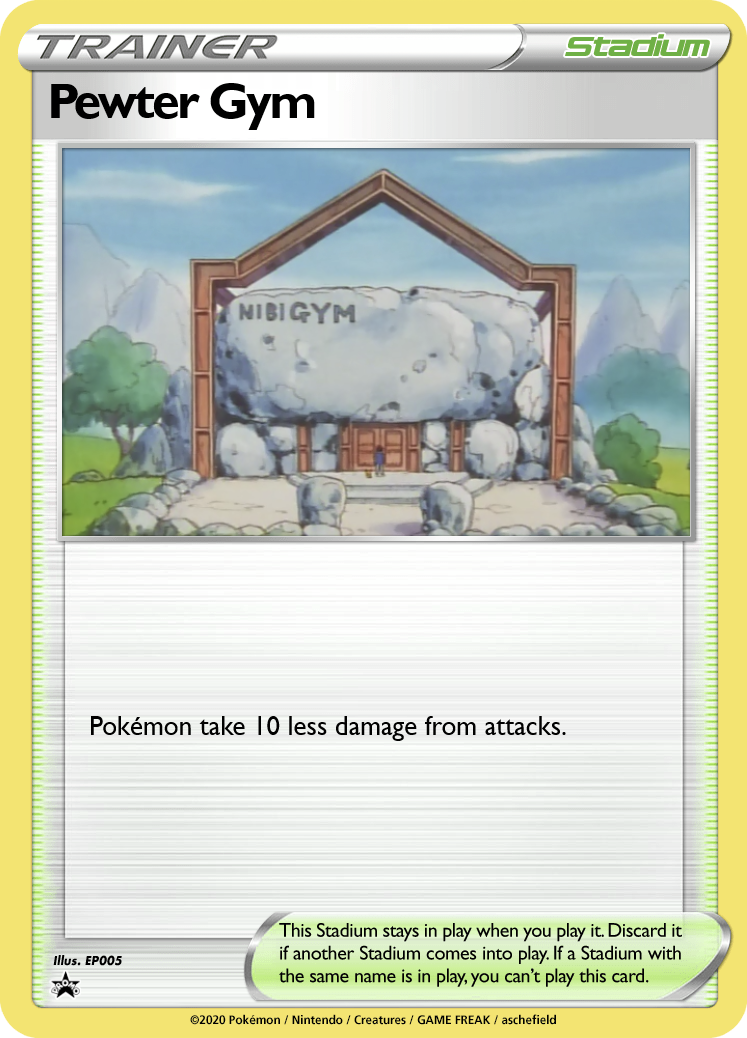
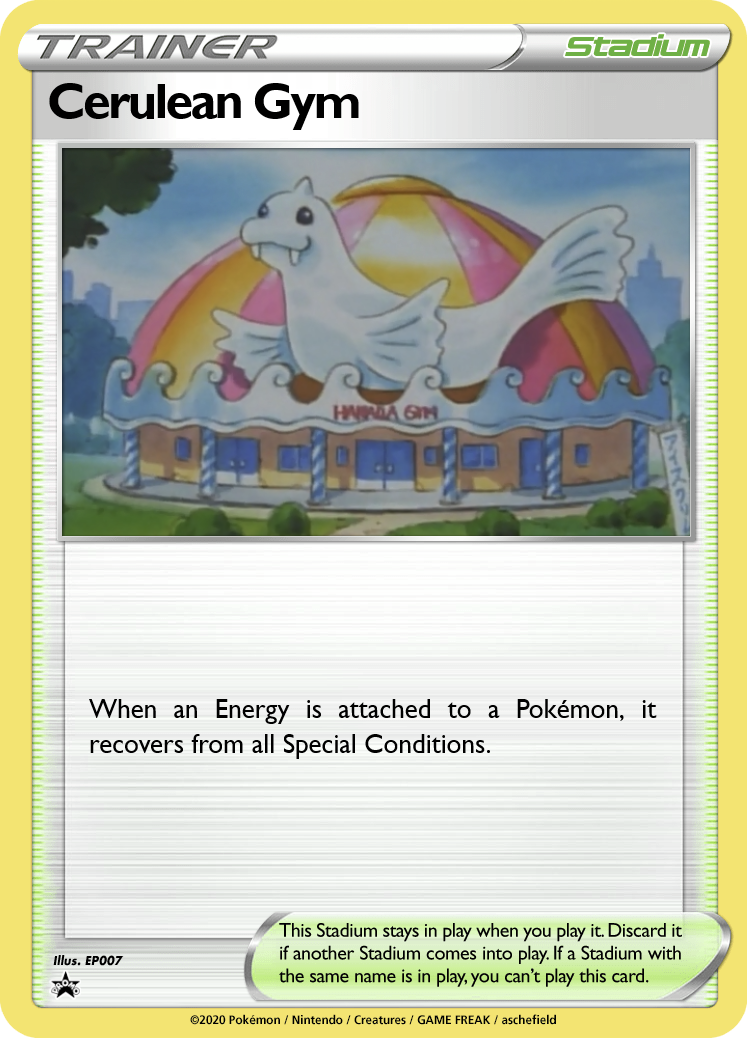
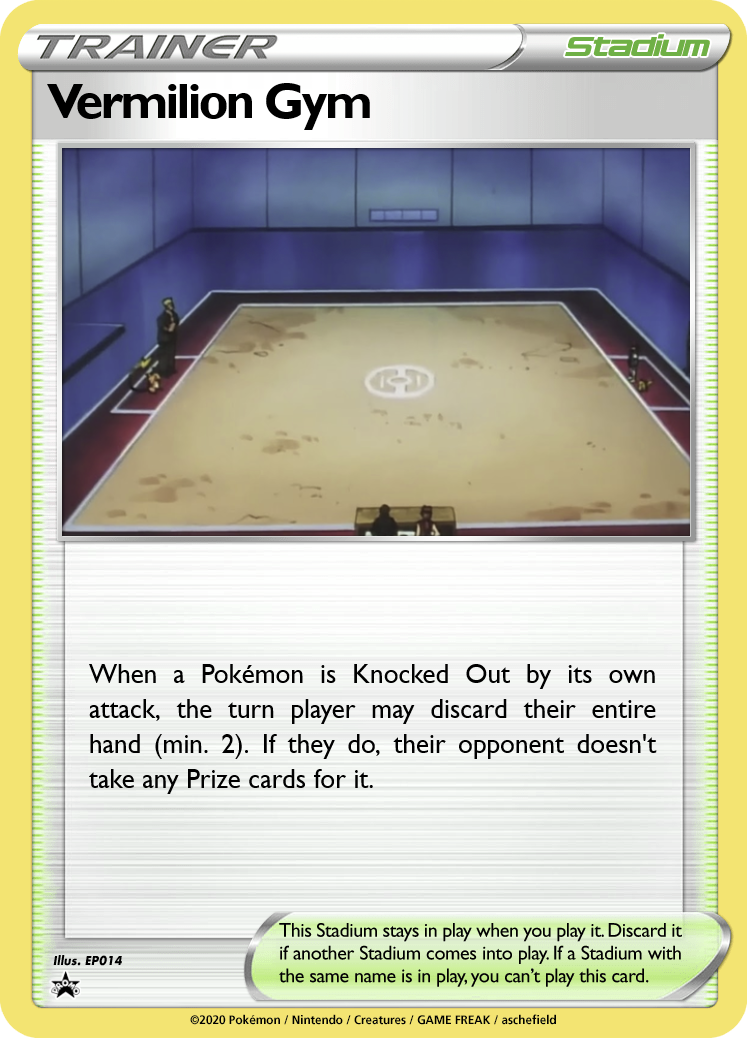
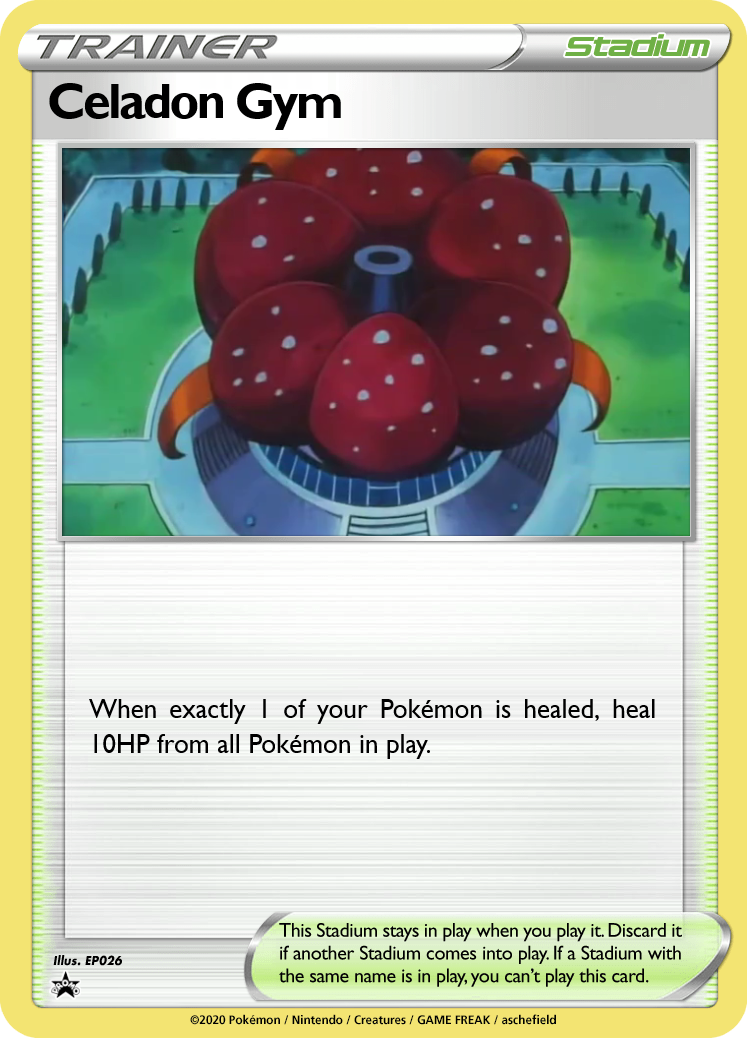
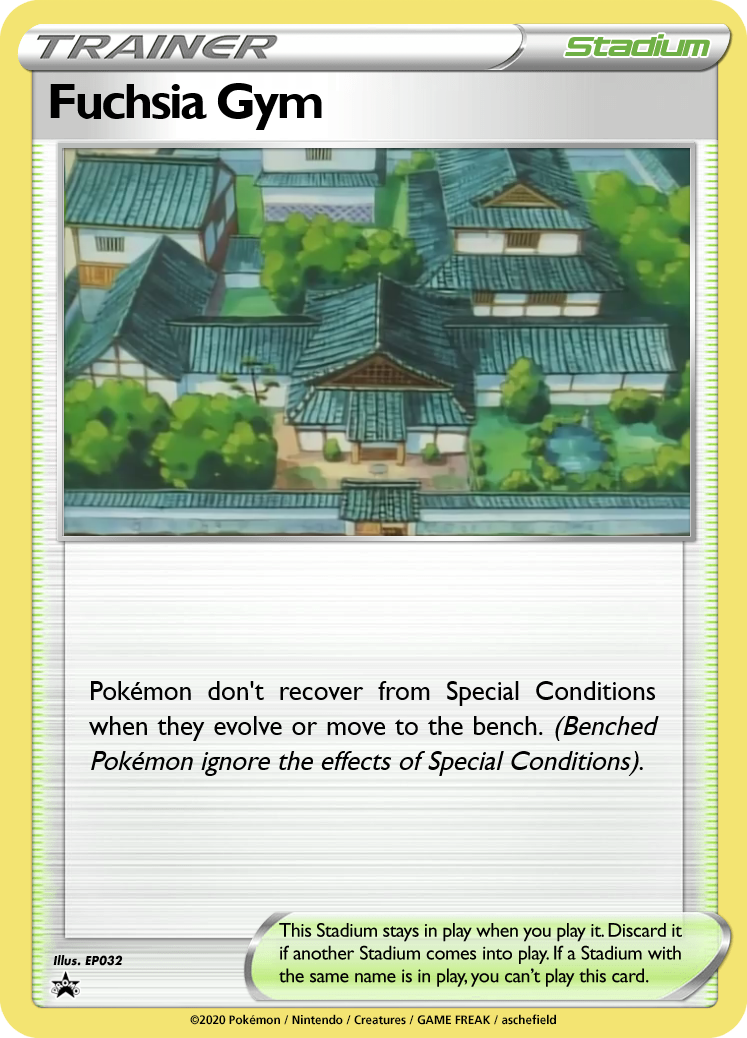
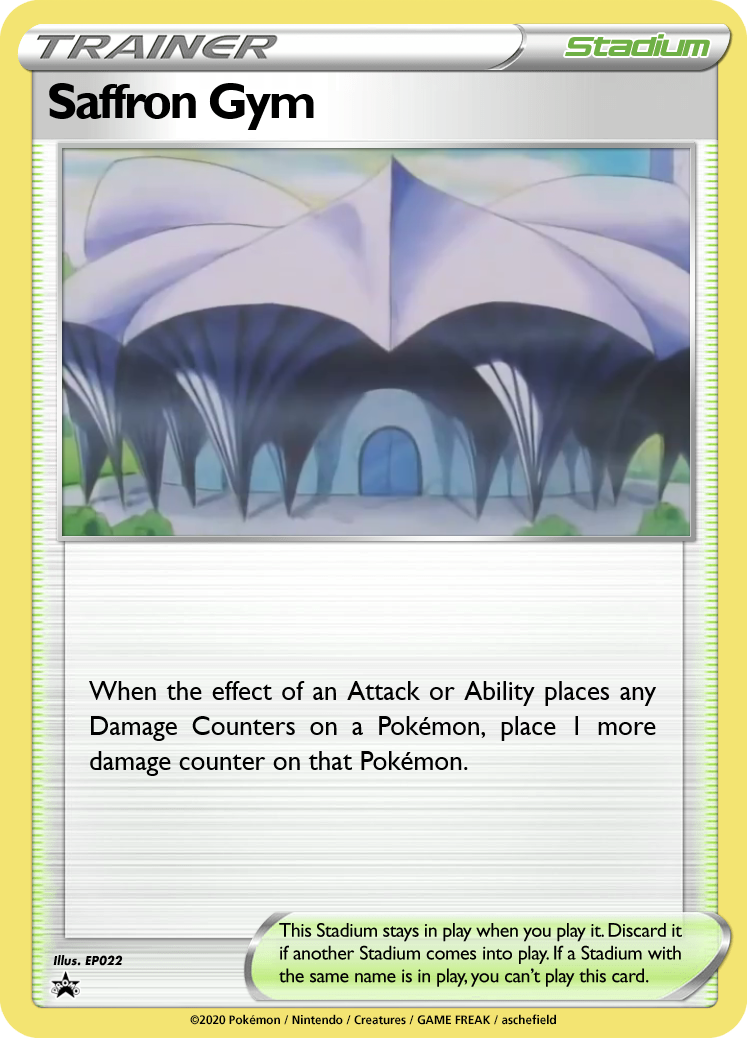

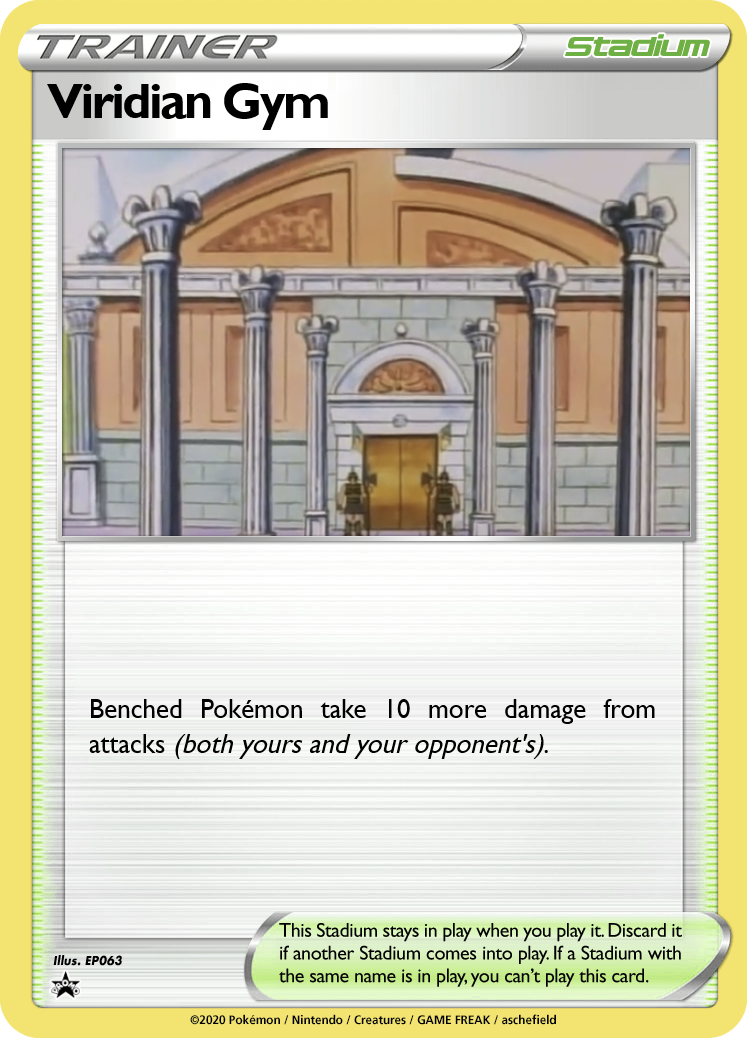
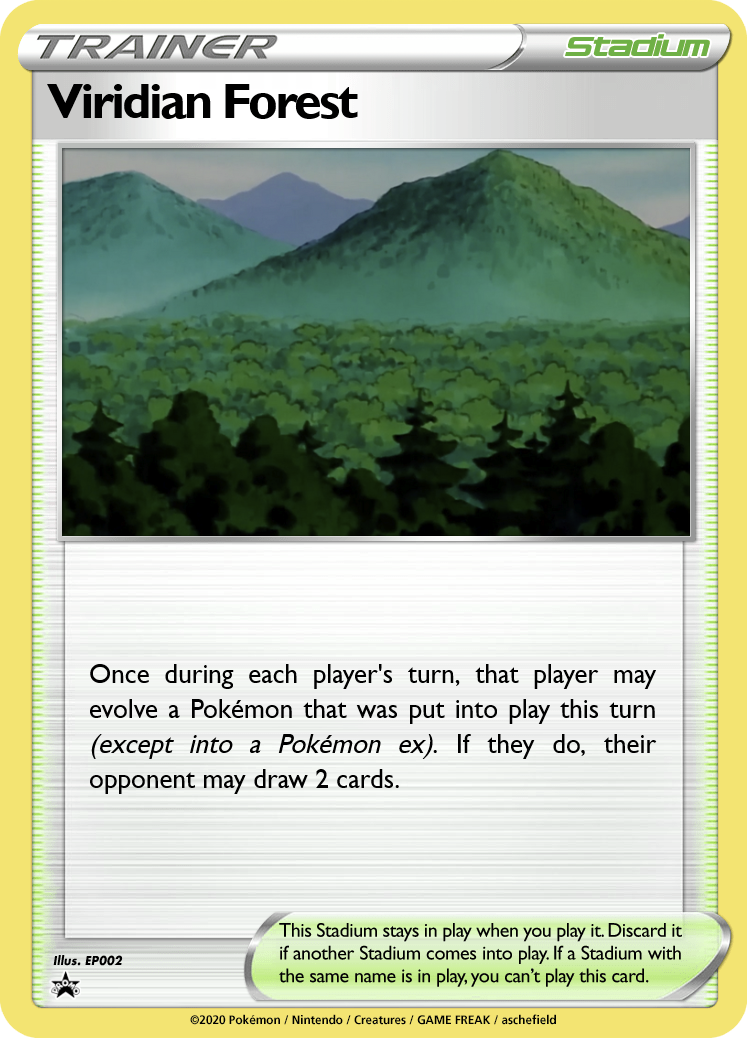
Stadium cards were first introduced immediately after the Base-Fossil format, in the Gym block. As a reference to this, I've held off on bringing in the cards until the final set, and the cards I've made into stadiums are, well, gyms!
Each stadium card is designed to reflect gameplay that matches the appropriate type. For example, Psychic types are the most likely to place Damage Counters, so Saffron Gym buffs damage counter effects. Note, however, that cards like Dugtrio and Victreebel can also benefit from the effect.
Viridian Forest is the sole exception to the gym theming. As the location of early-game bug types, which are quick to evolve, the effect has been designed to allow any Pokémon to evolve.
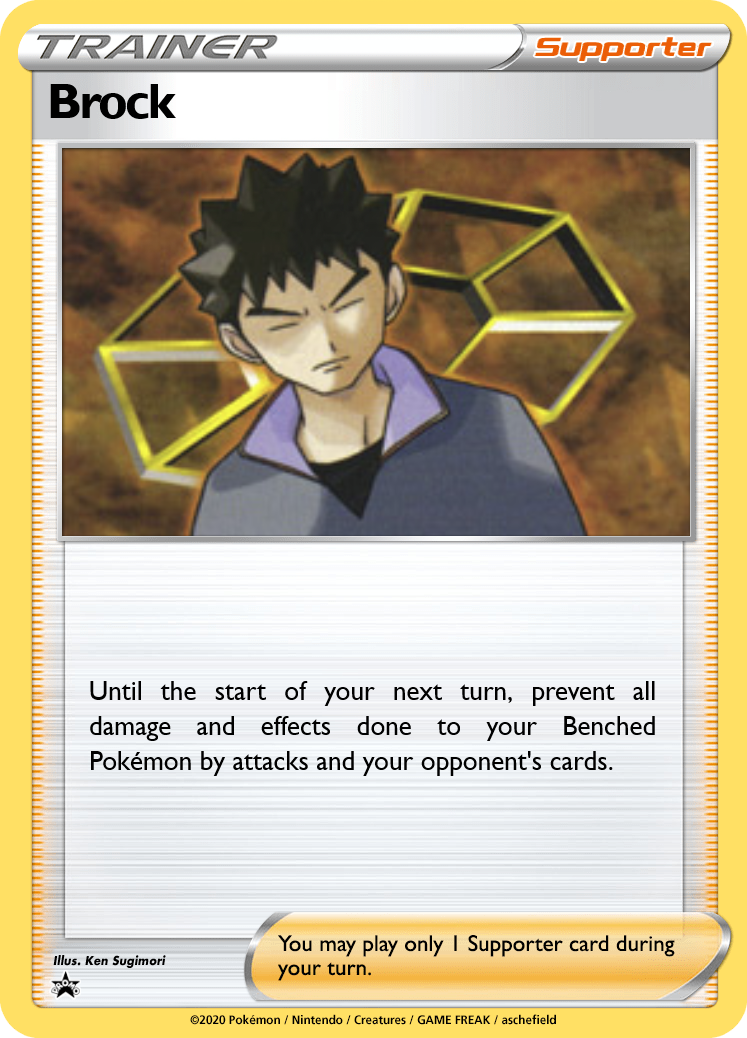
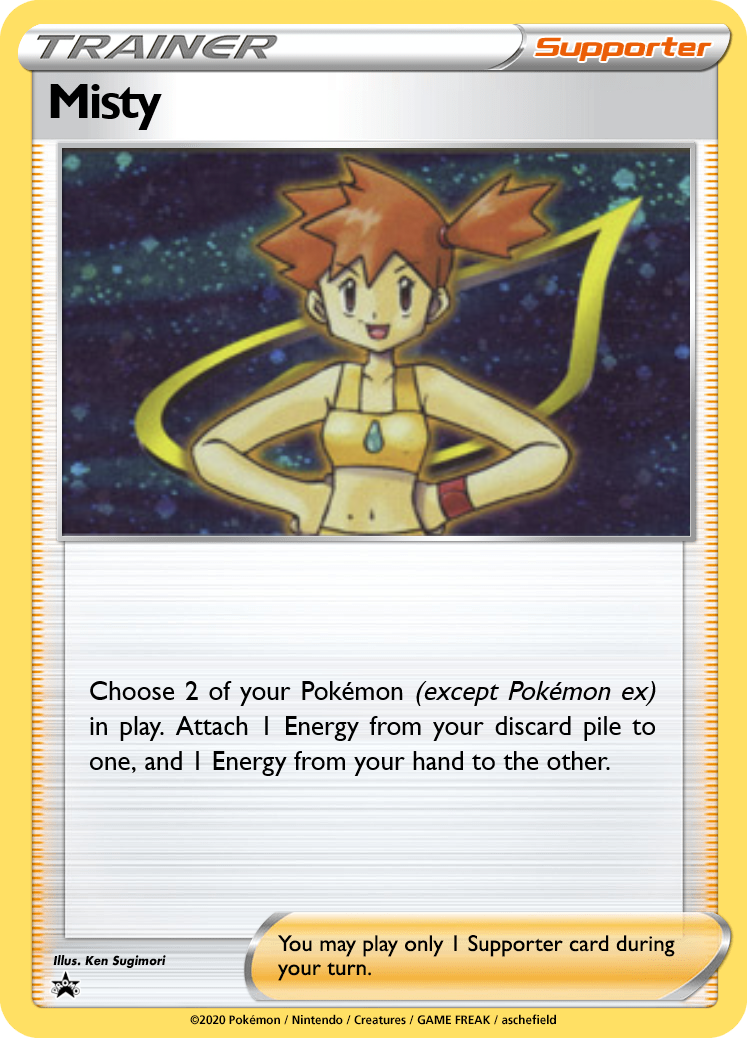
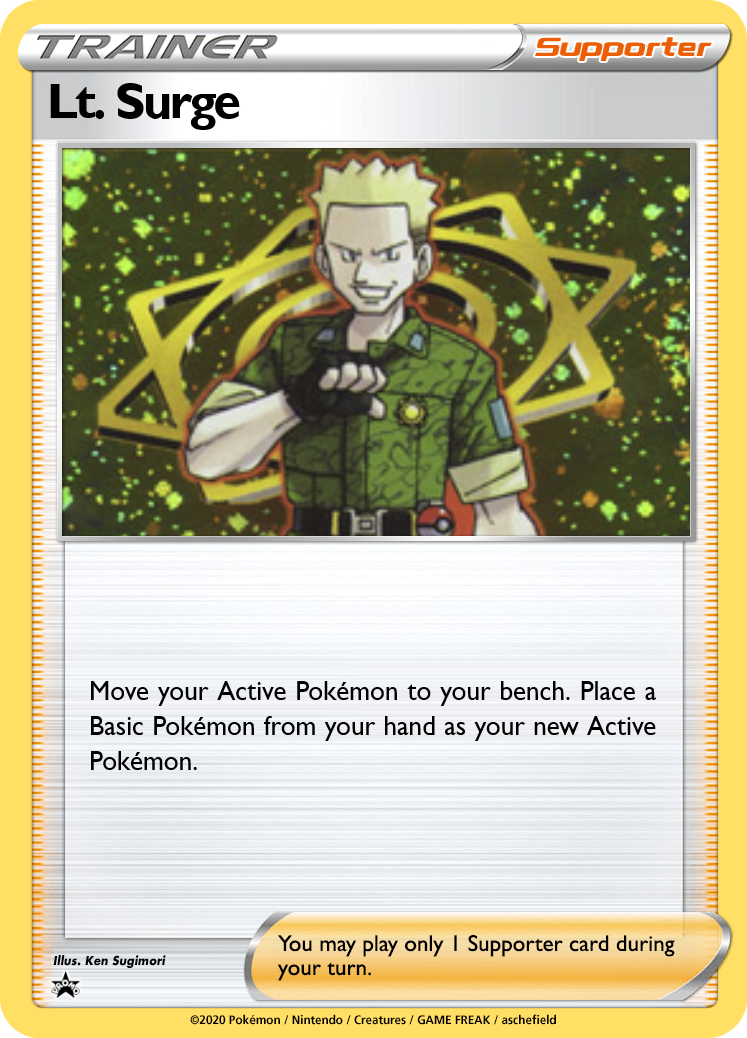
Like with Stadiums, most gym leaders are designed to match their type's theme. Brock protects your Pokémon from Earthquake, and Misty's Energy Acceleration matches the theme of Rain Dance. Lt. Surge likely stands out as an incredibly weak card, but it is the only way to get Snorlax out of your Active Spot. Fitting, given Snorlax's tendency to appear near Vermilion City.
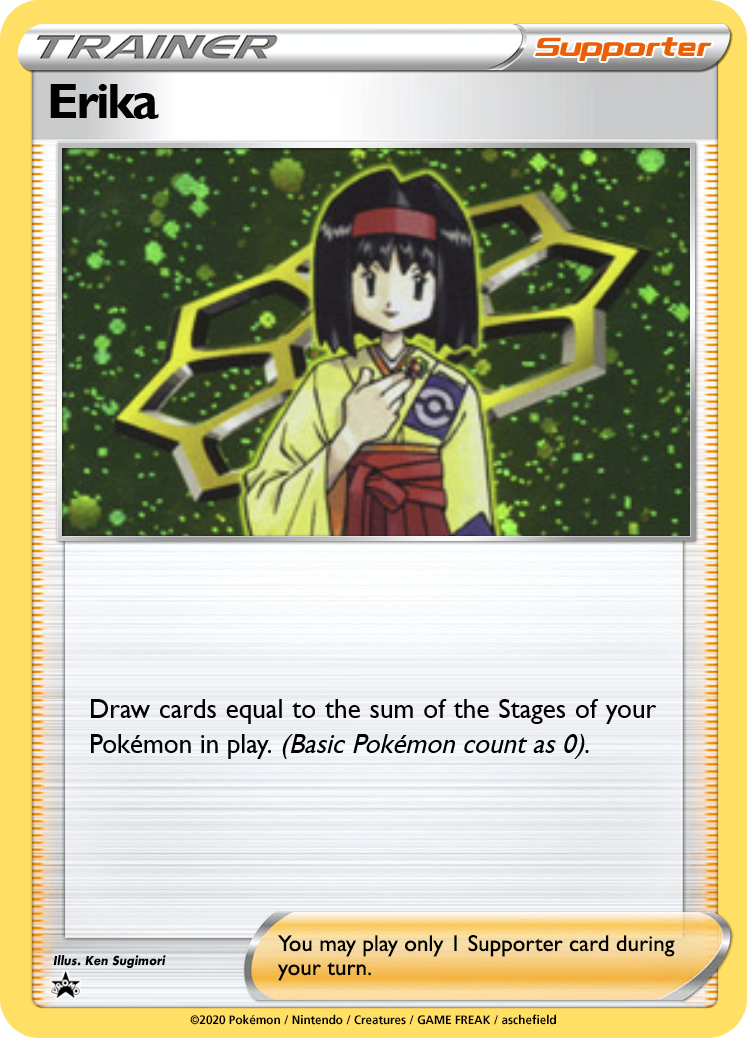
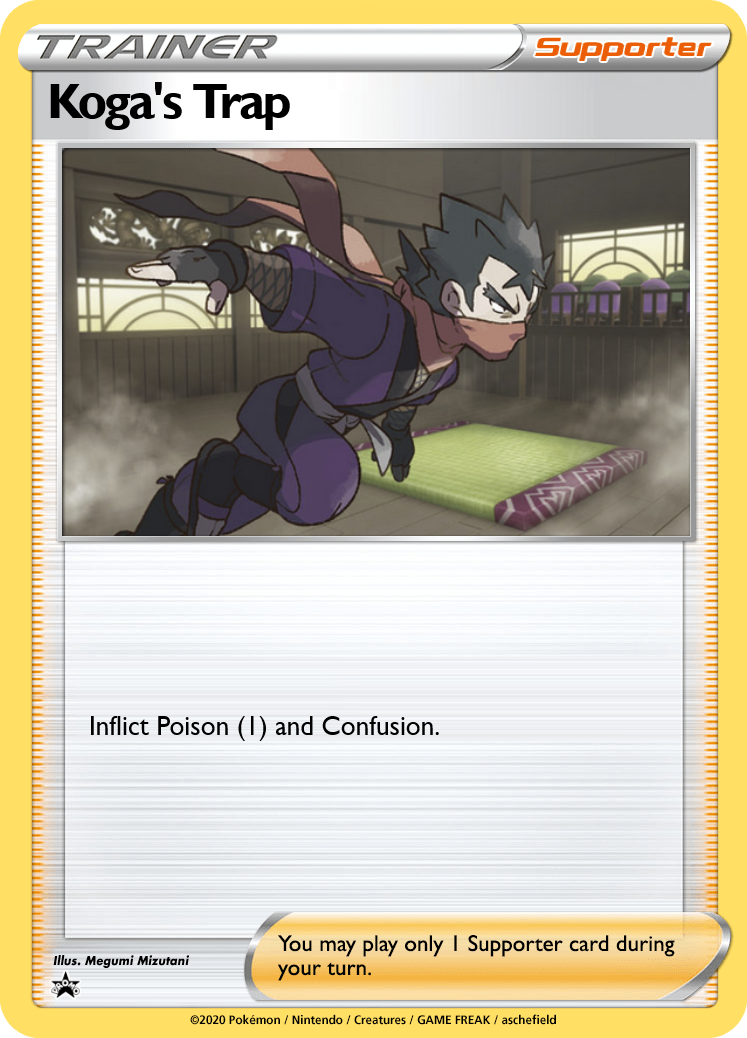
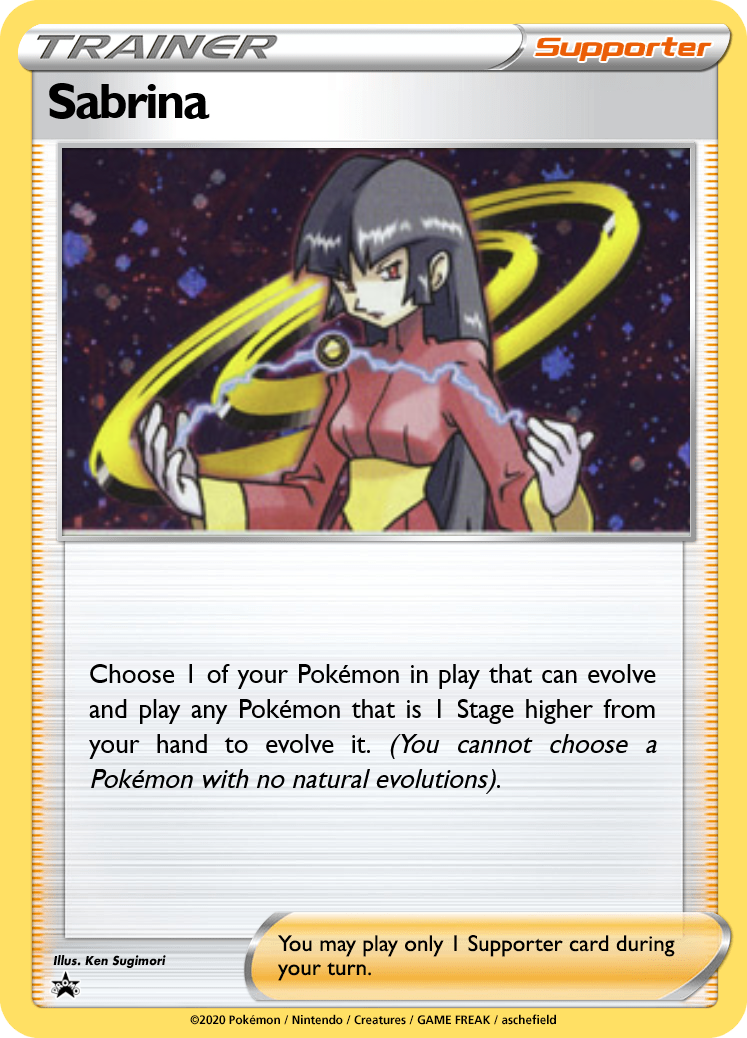
Erika works well with the Grass type Pokémon capable of evolving quickly, even if those are technically bugs. Koga's Trap turns on the various Poison related Abilities, and Sabrina is a unique effect able to support decks running multiple different evolution lines. Of particular note is the Psychic-type Slowbro, who can be used to copy any evolving basic's attack. Diglett is one good candidate!
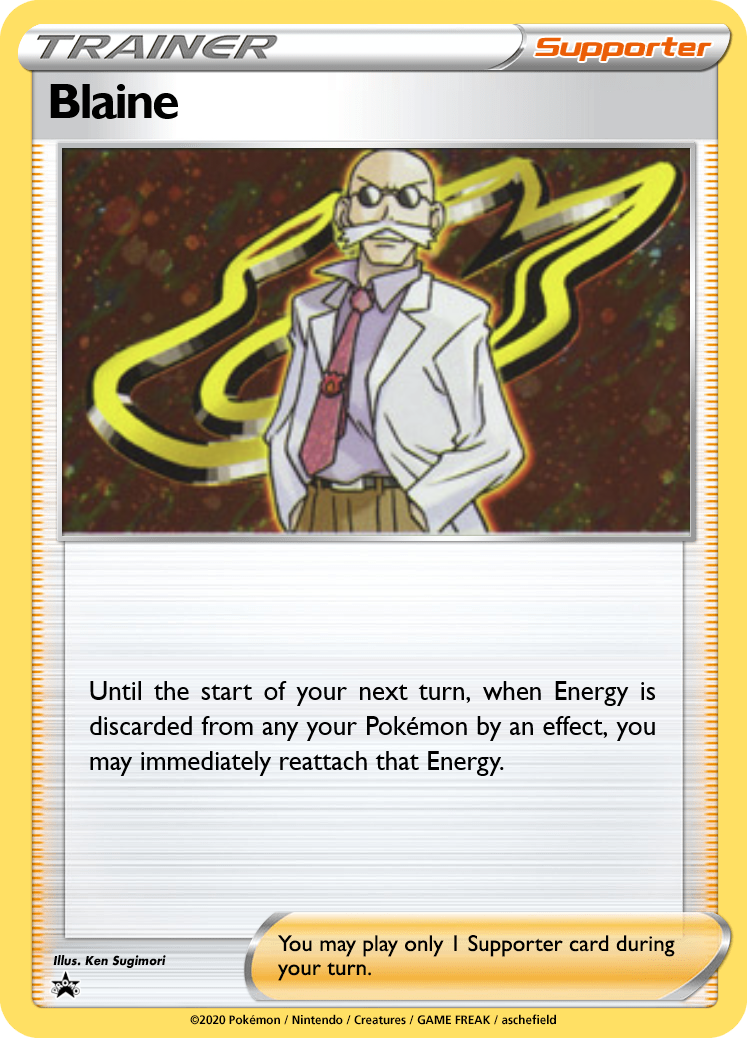
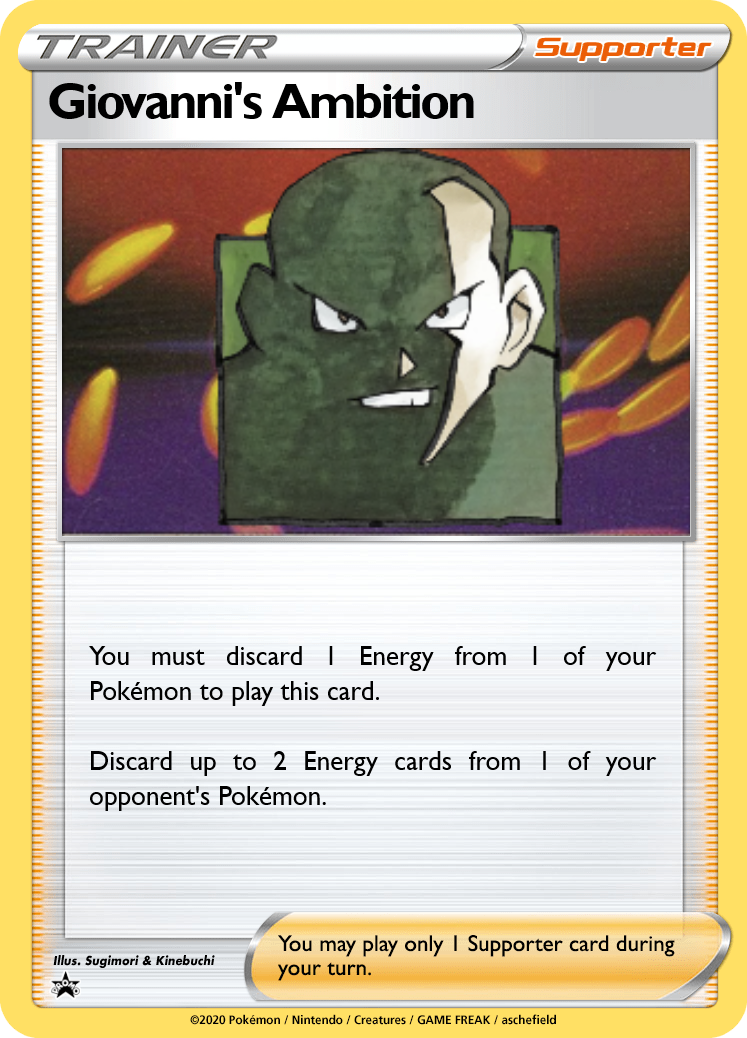
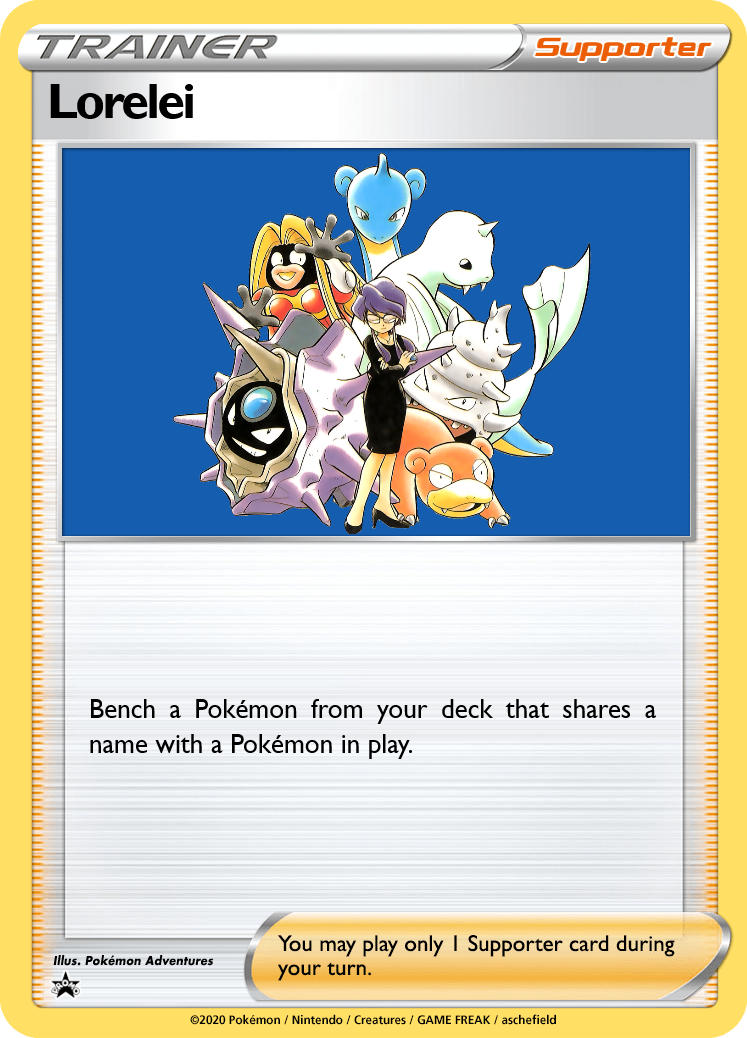
Blaine's effect is an amped-up version of Cinnabar Gym, doubling as protection from Energy Removal. Giovanni takes on the original effect of Super Energy Removal, and Lorelei allows players to cheat out an extra copy of evolved Pokémon.
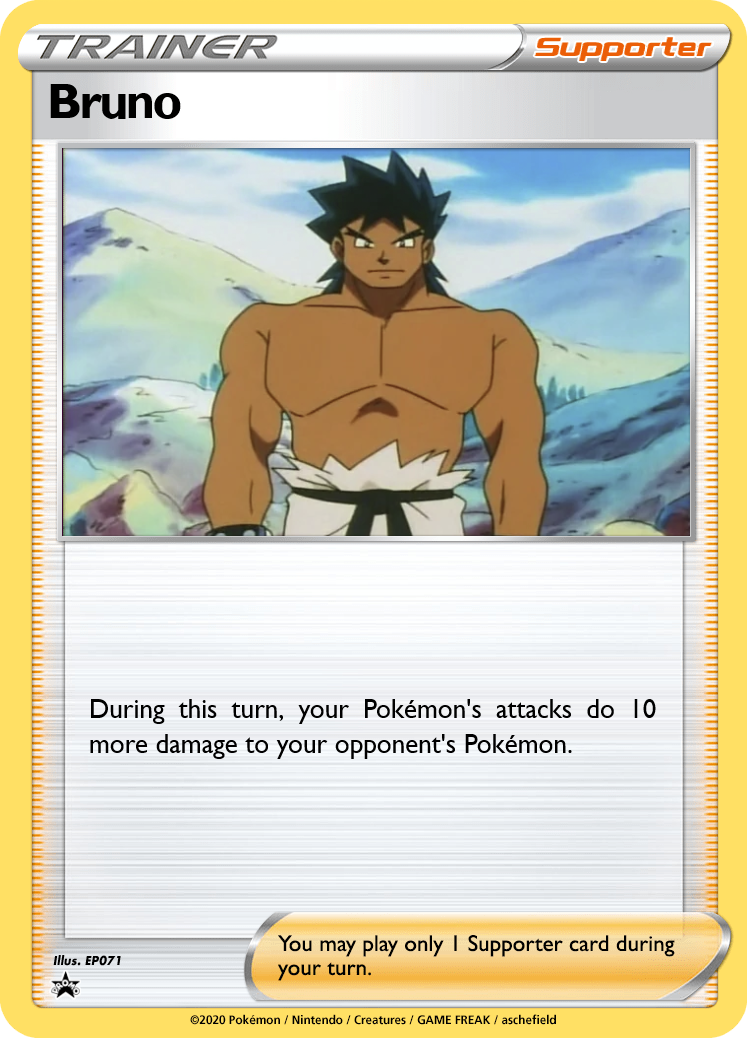
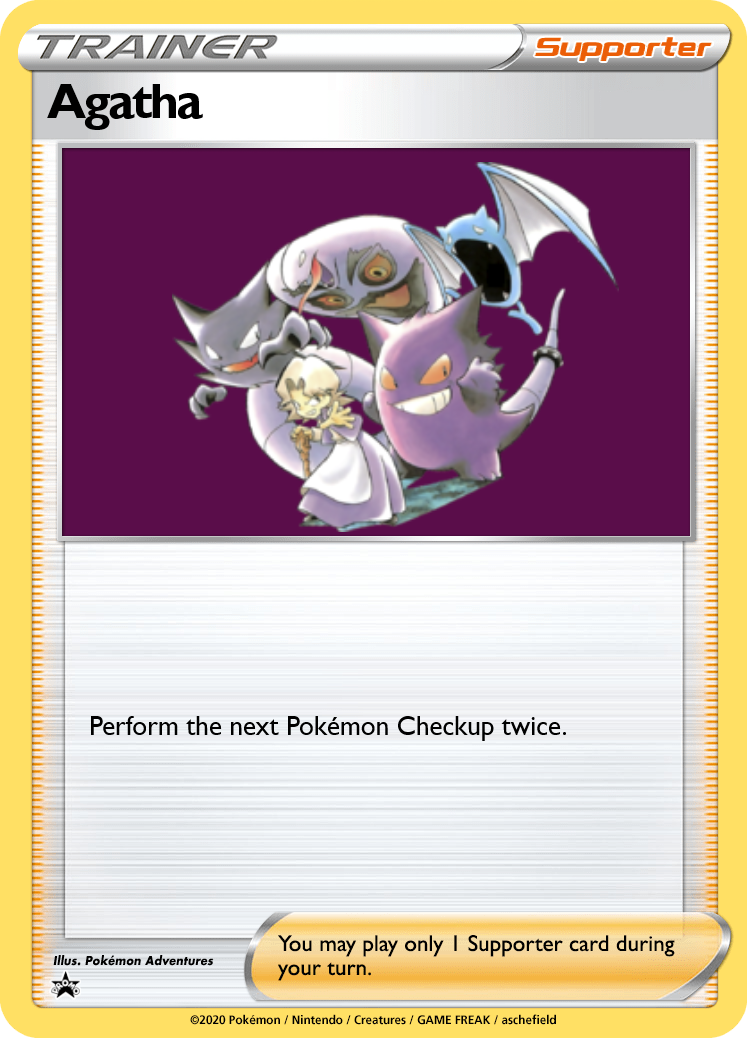
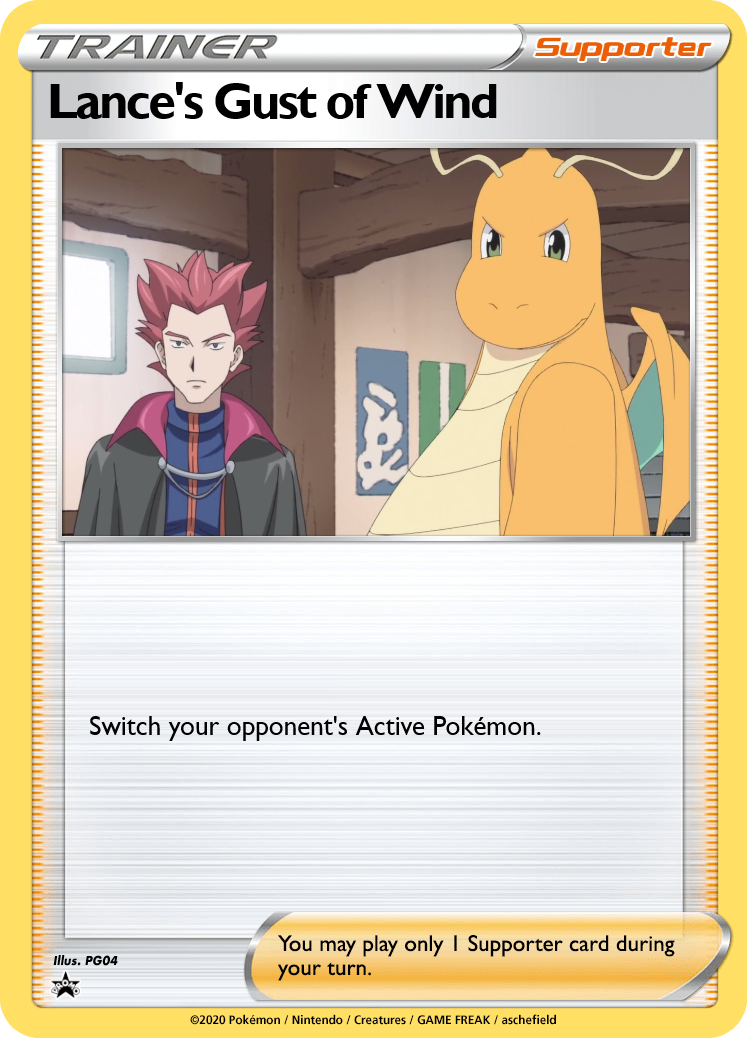
Bruno's effect is a buffed PlusPower, now applying to all opposing Pokémon hit; spread decks revolving around Earthquake or Dewgong can deal significantly more damage. Agatha doubles up any Poison or Burn damage inflicted to Pokémon, but can also be used to help wake up from Sleep. Finally, as Champion, Lance gets access to gusting, which also fits thematically with the Dragonite card.
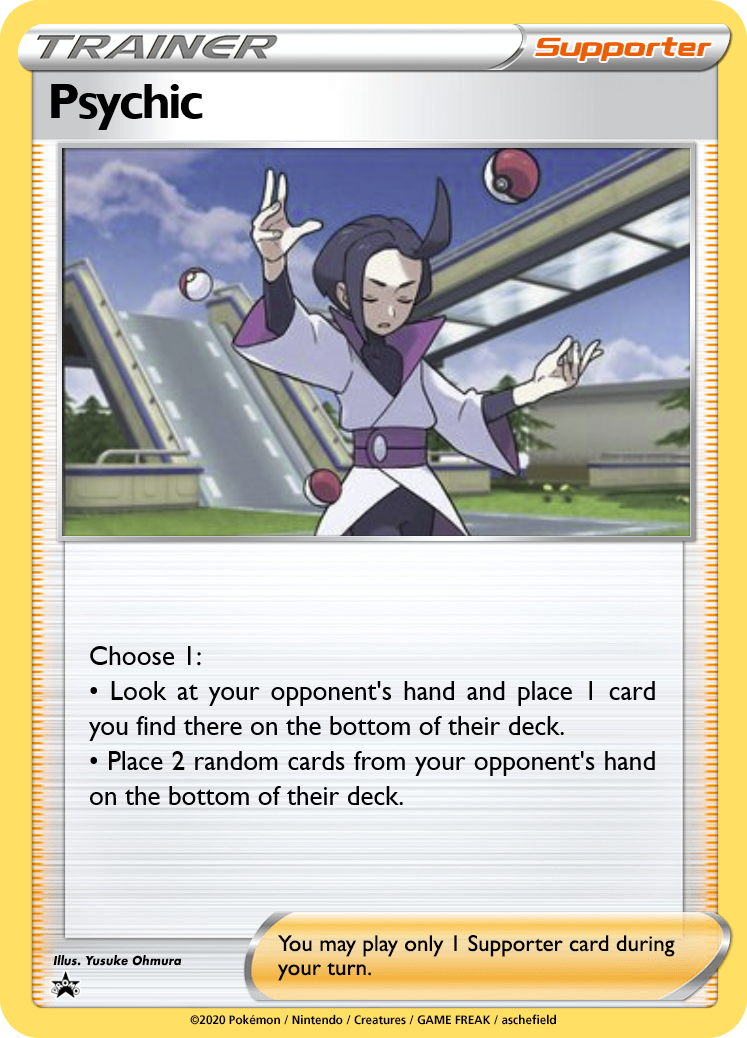
...oh yeah also psychic is here as a control card. being able to selectively put away an opponent's Supporter or Energy is powerful, while removing 2 cards can potentially wipe their hand if timed well.